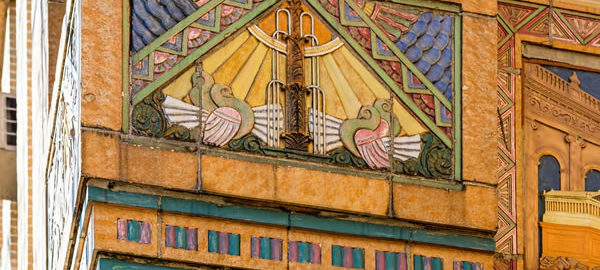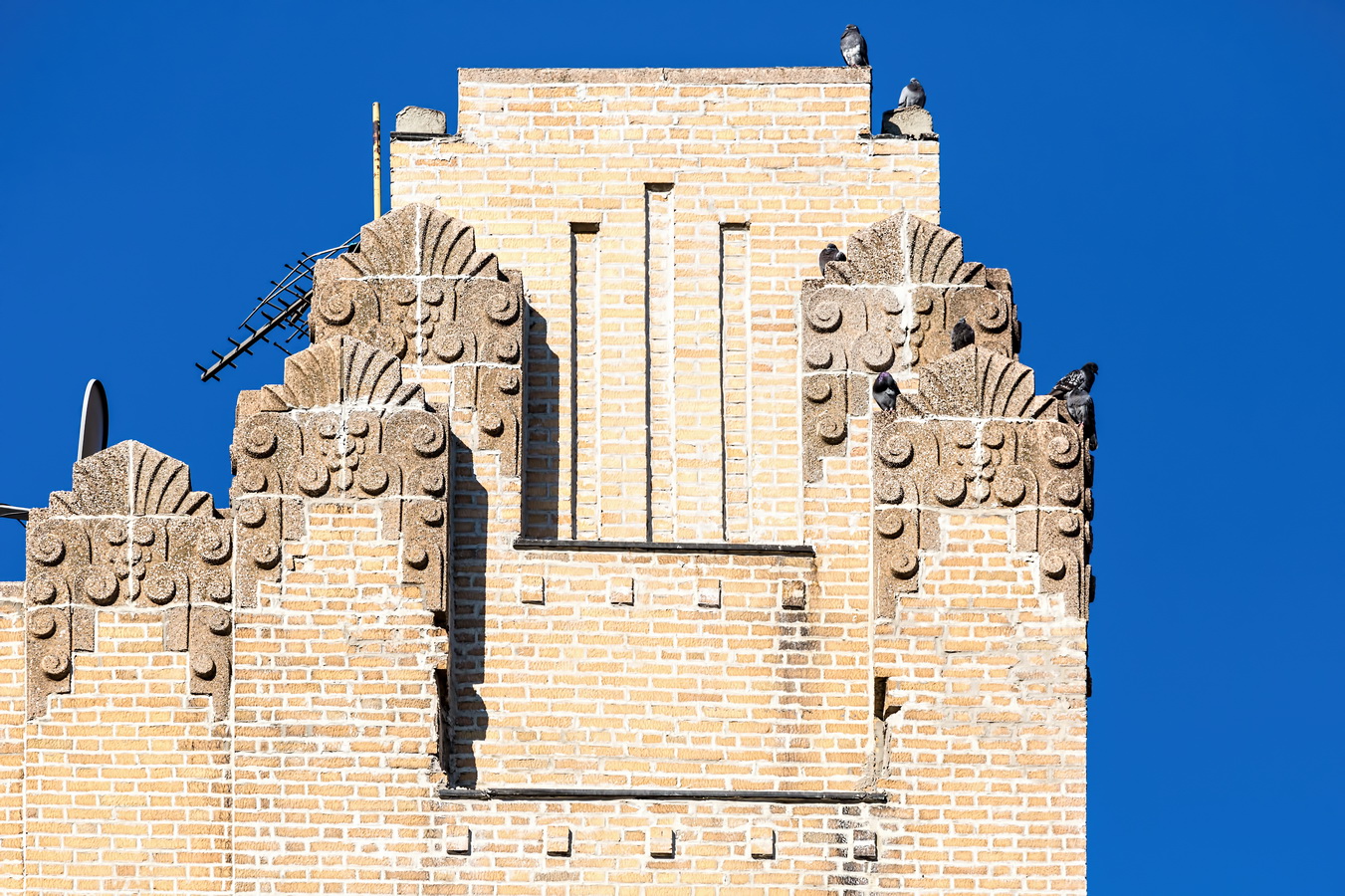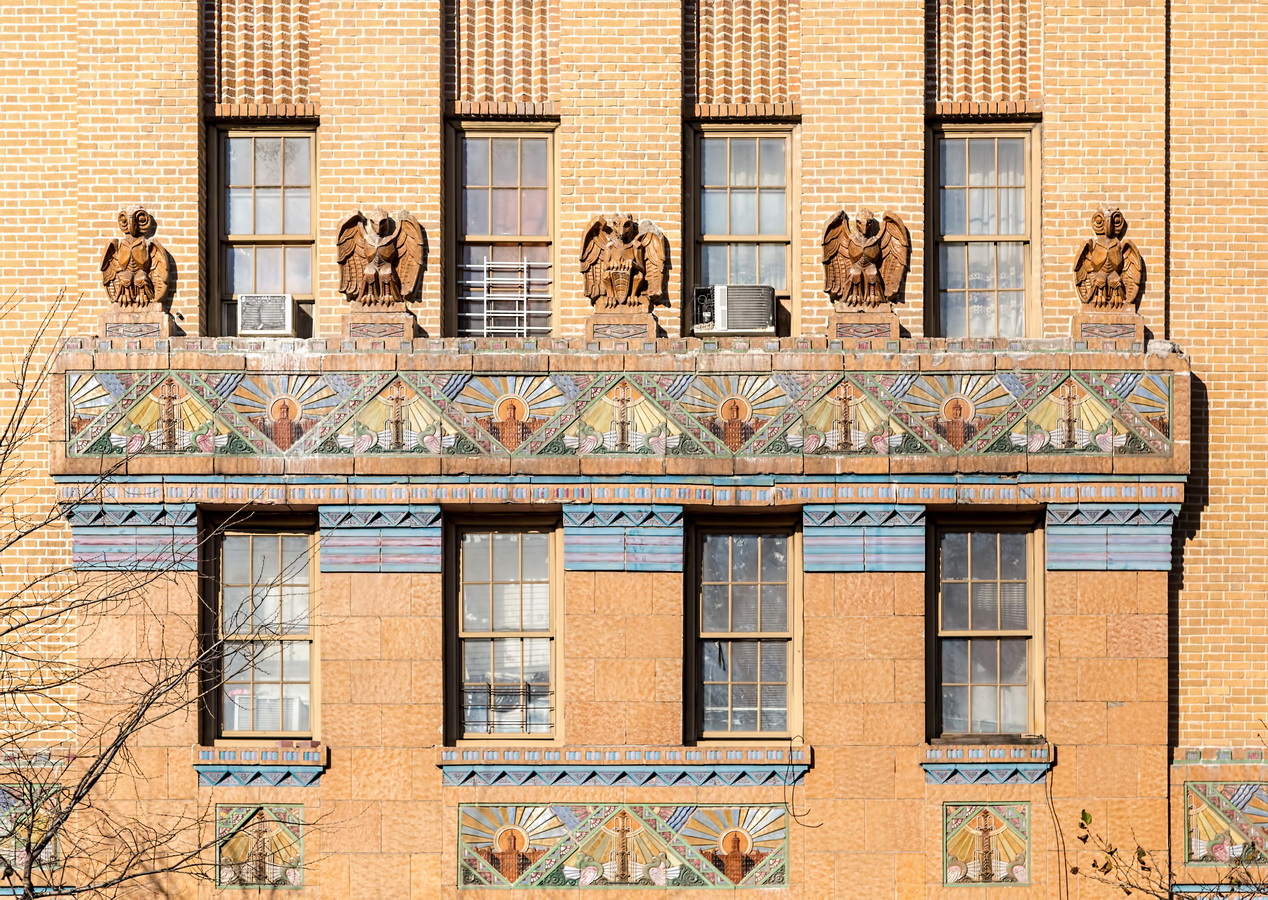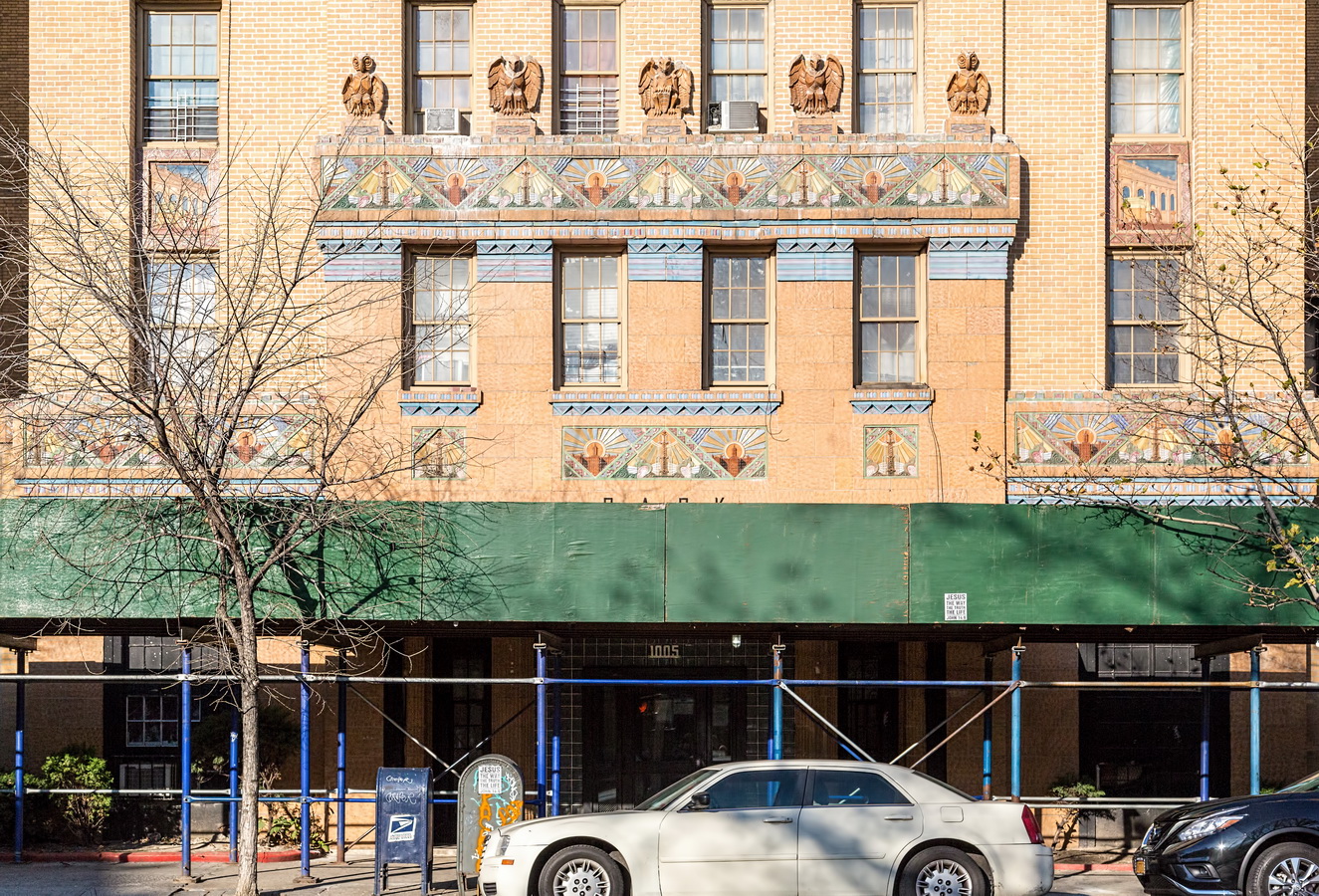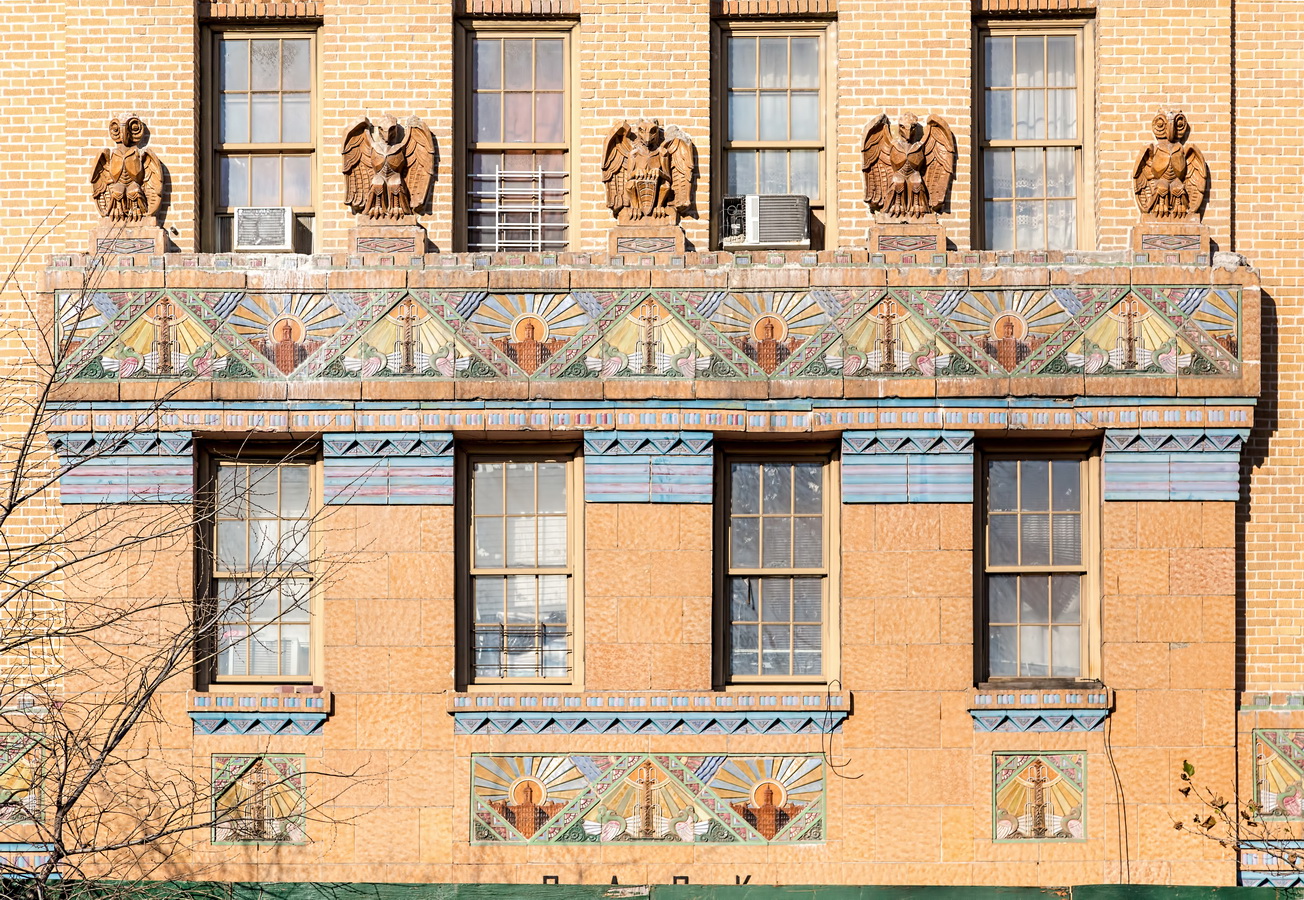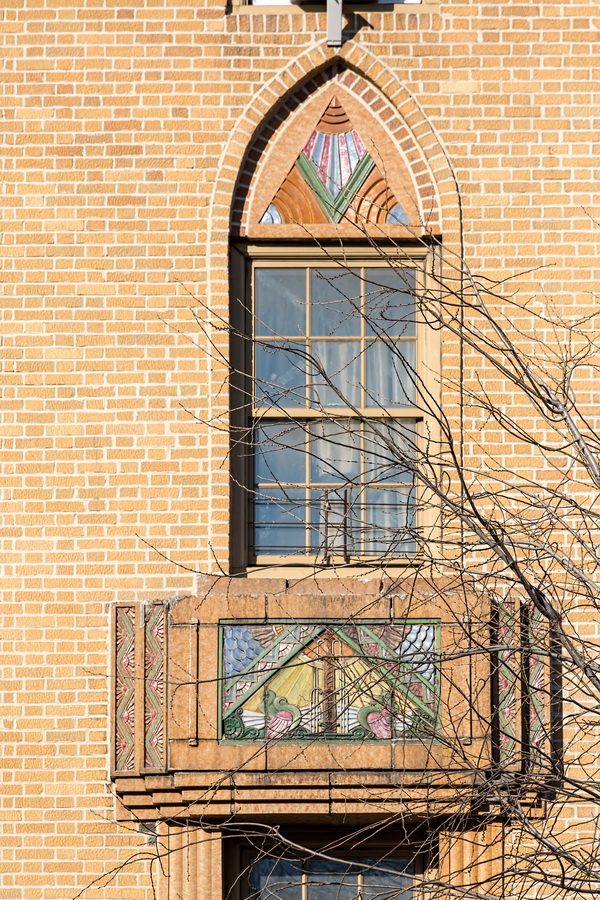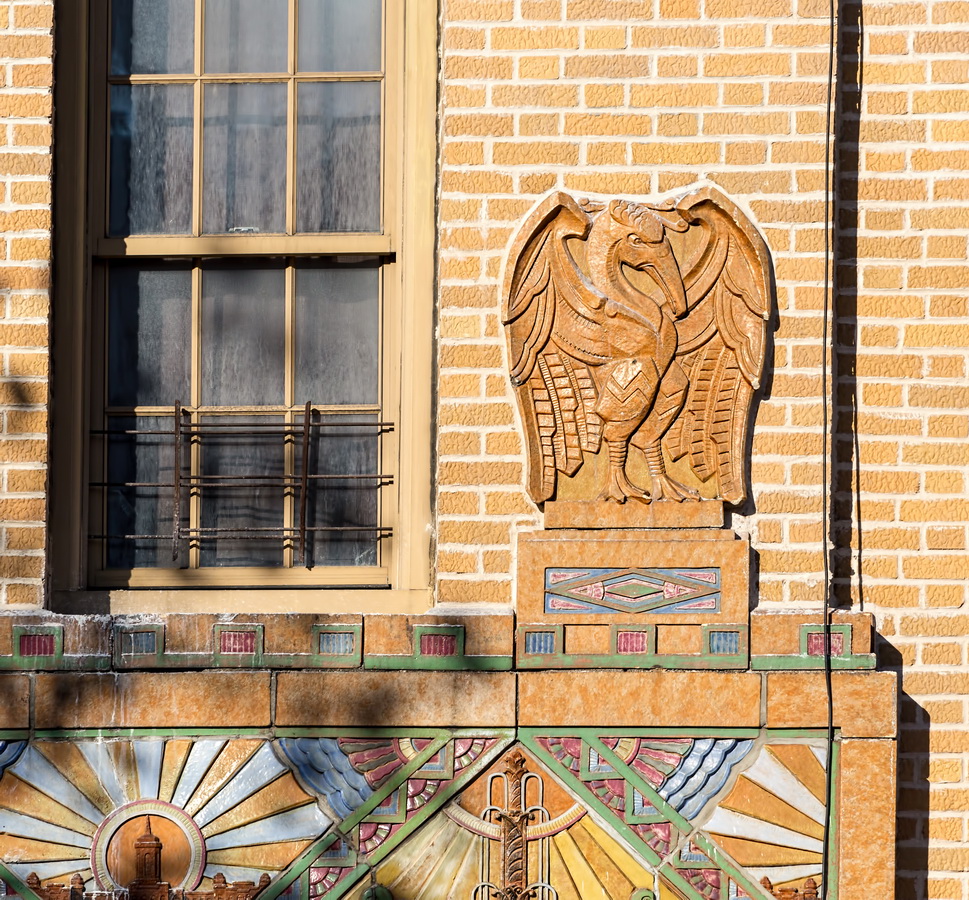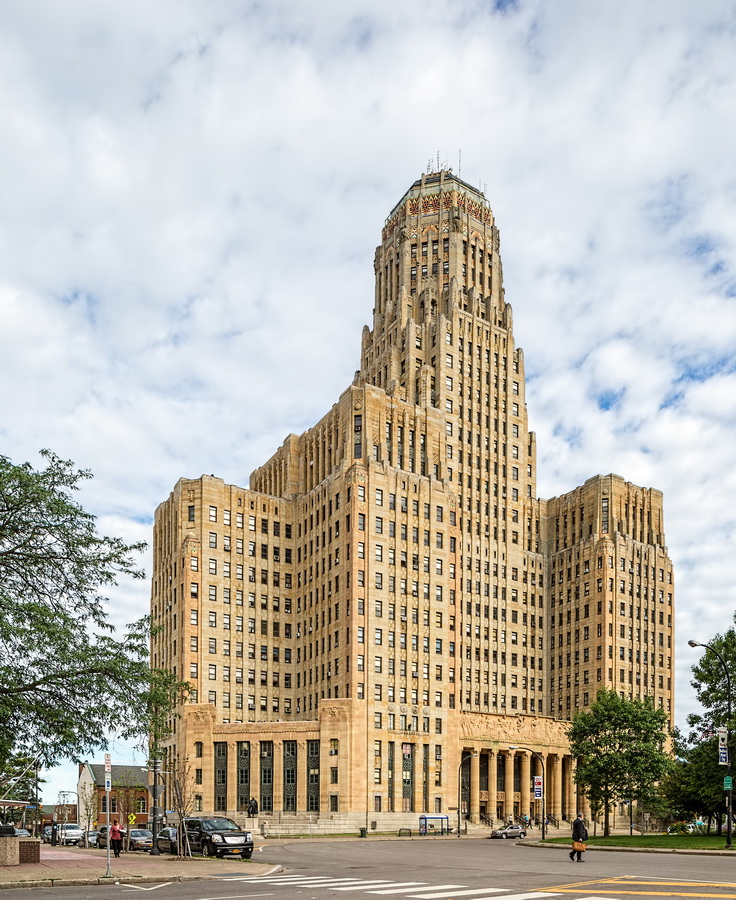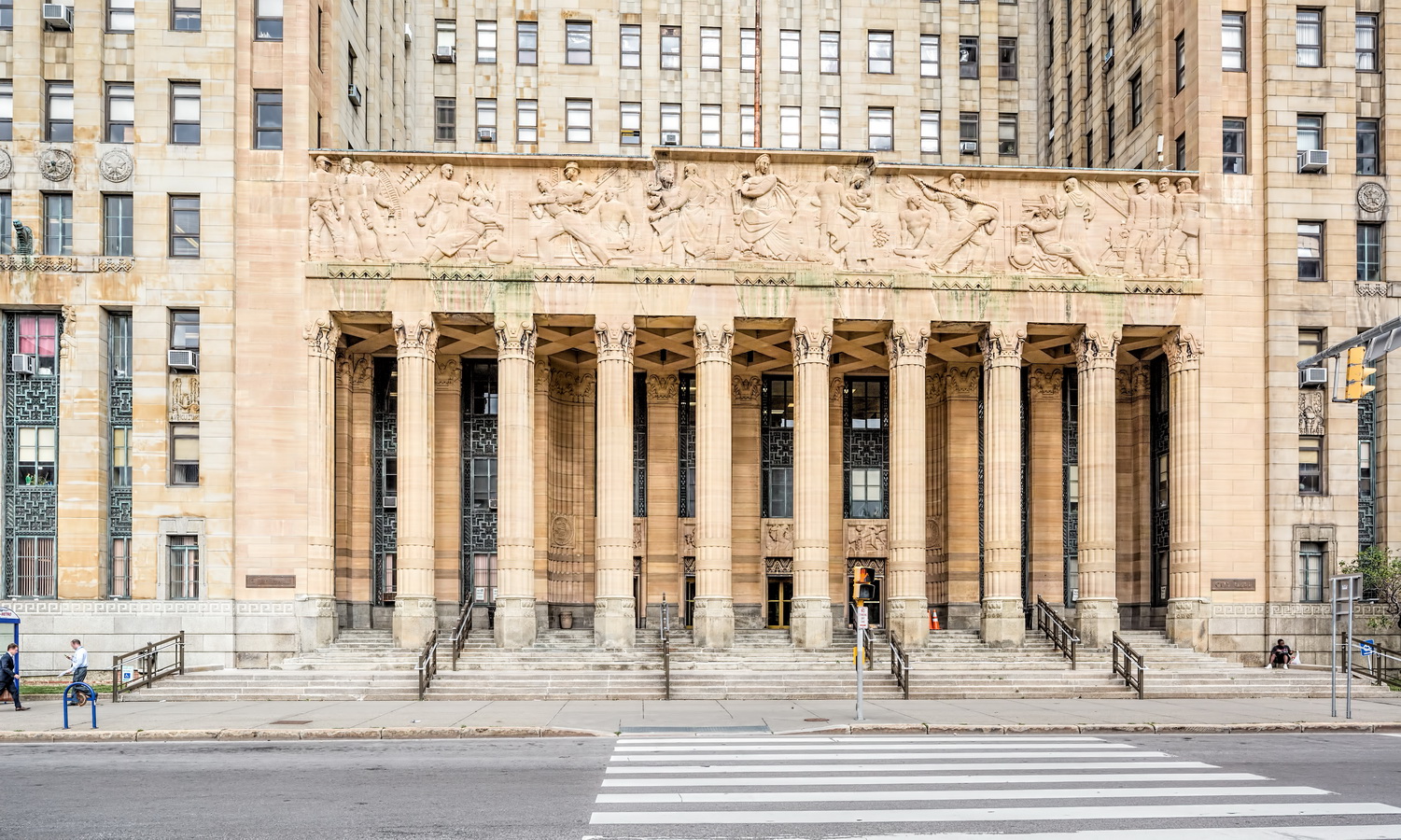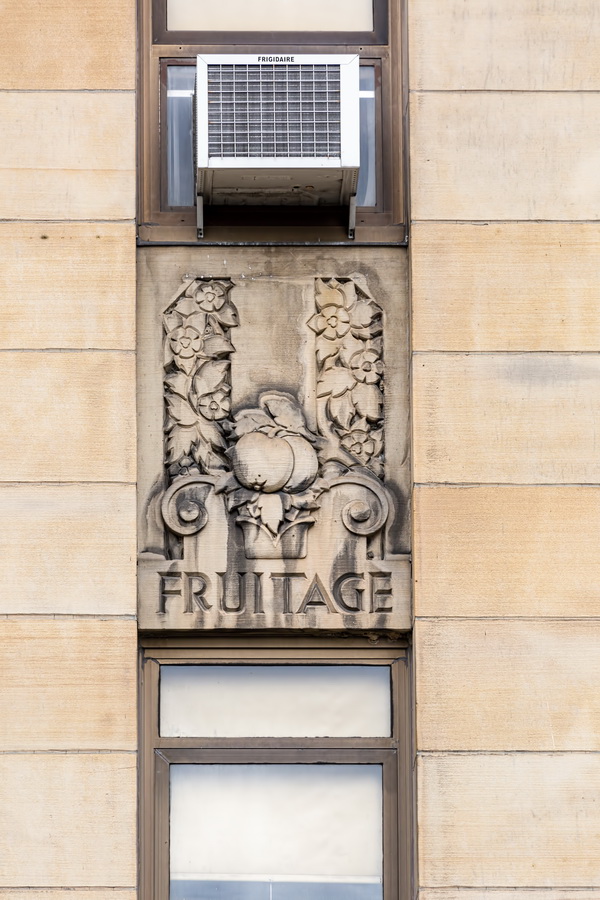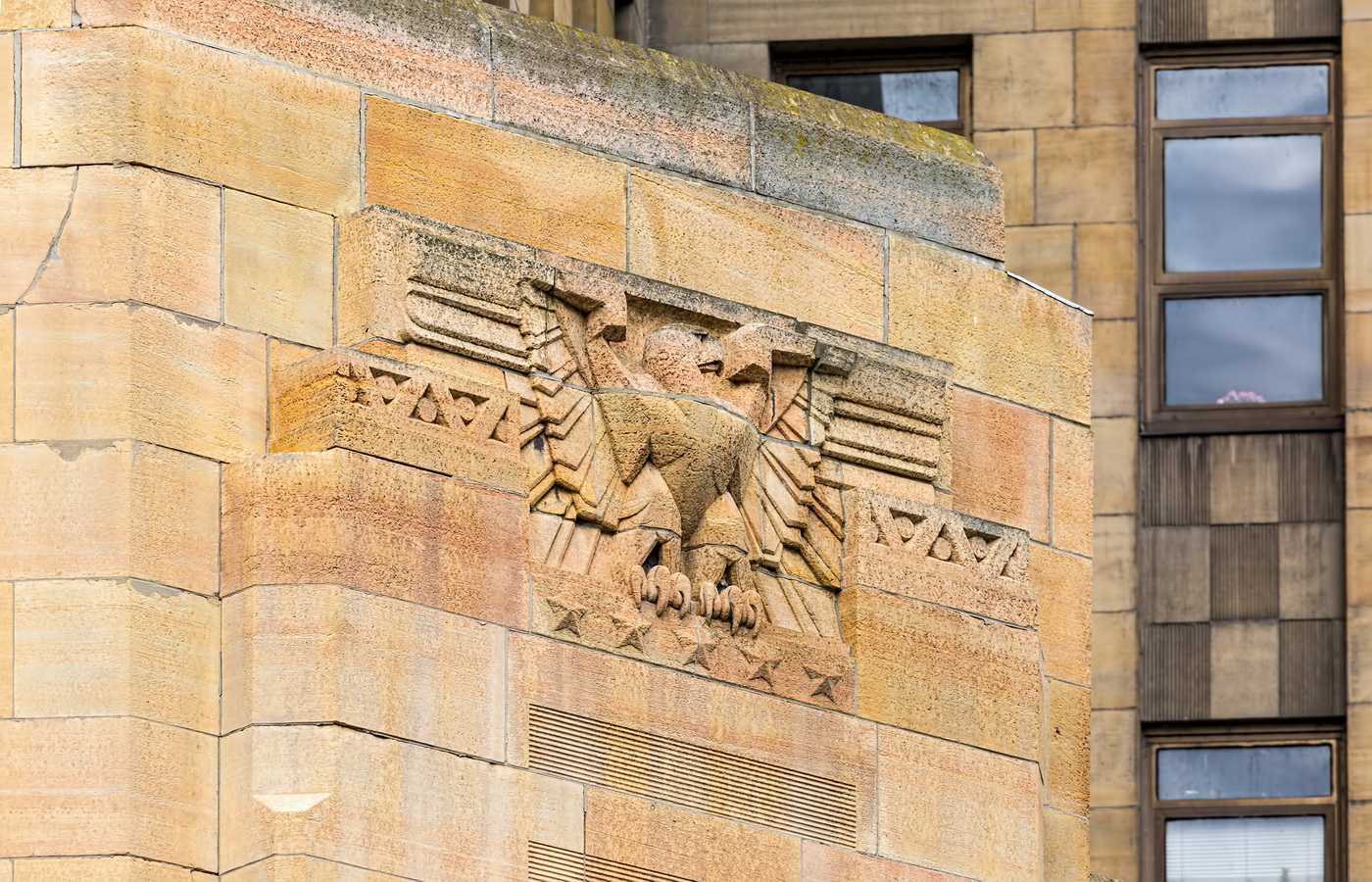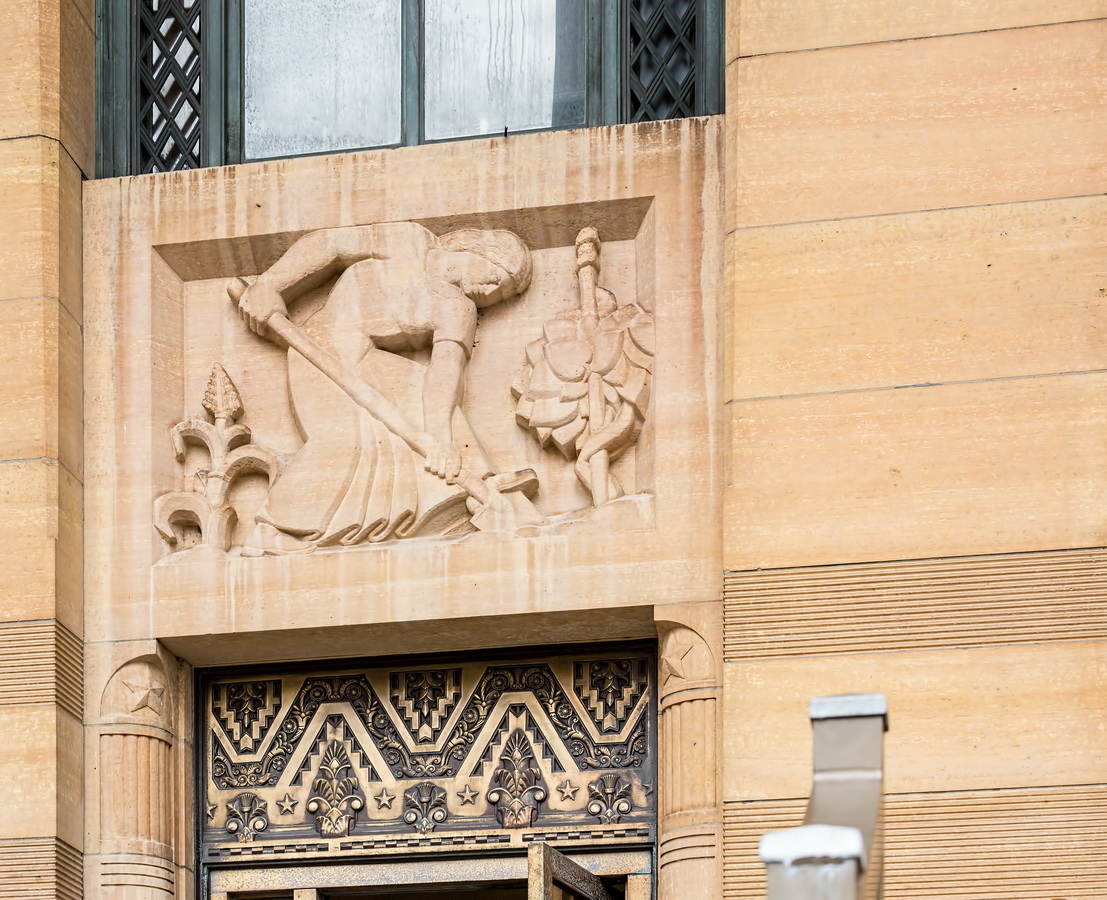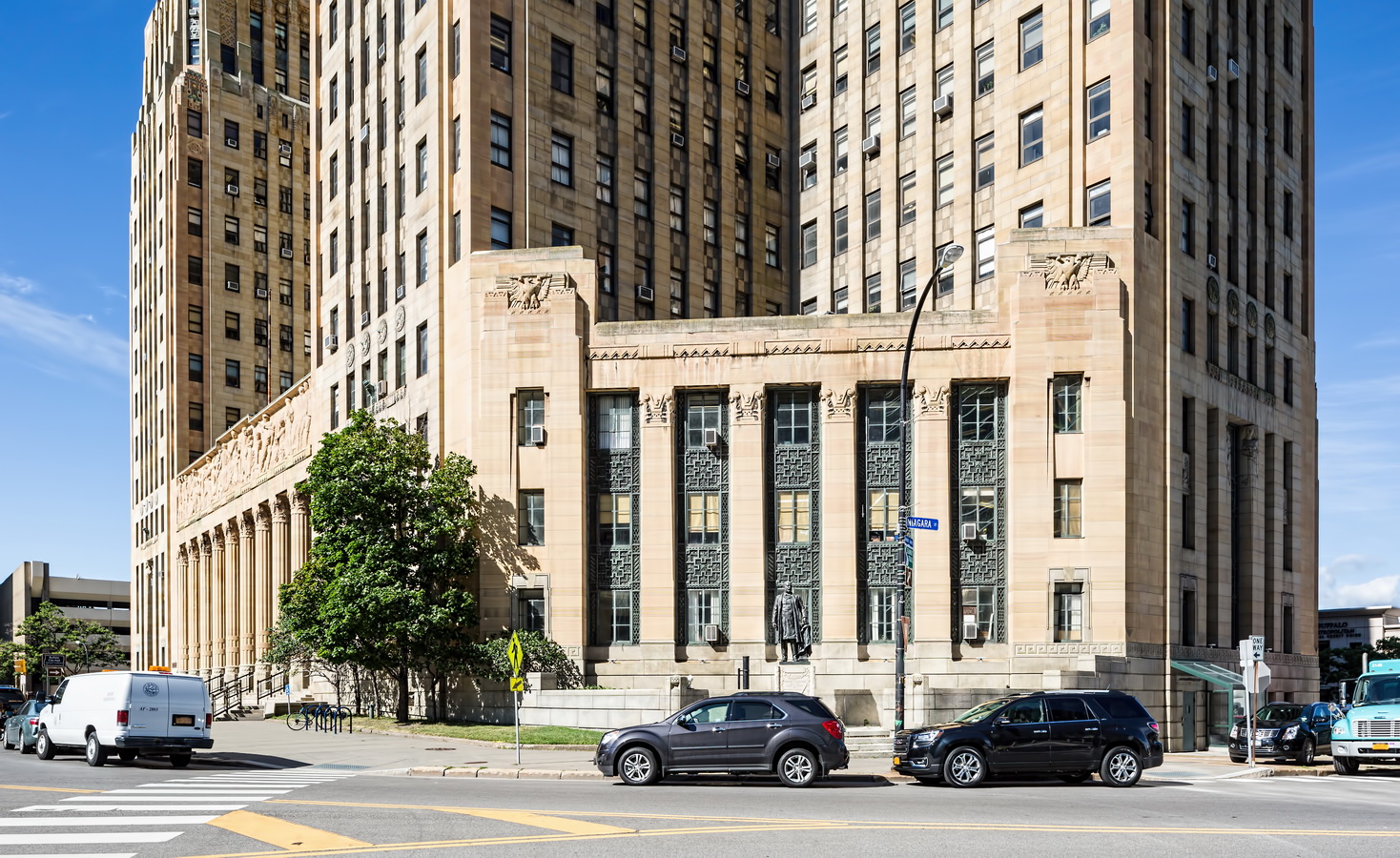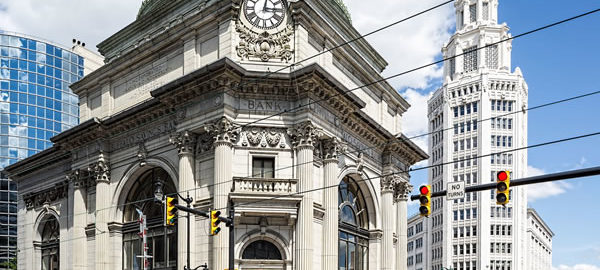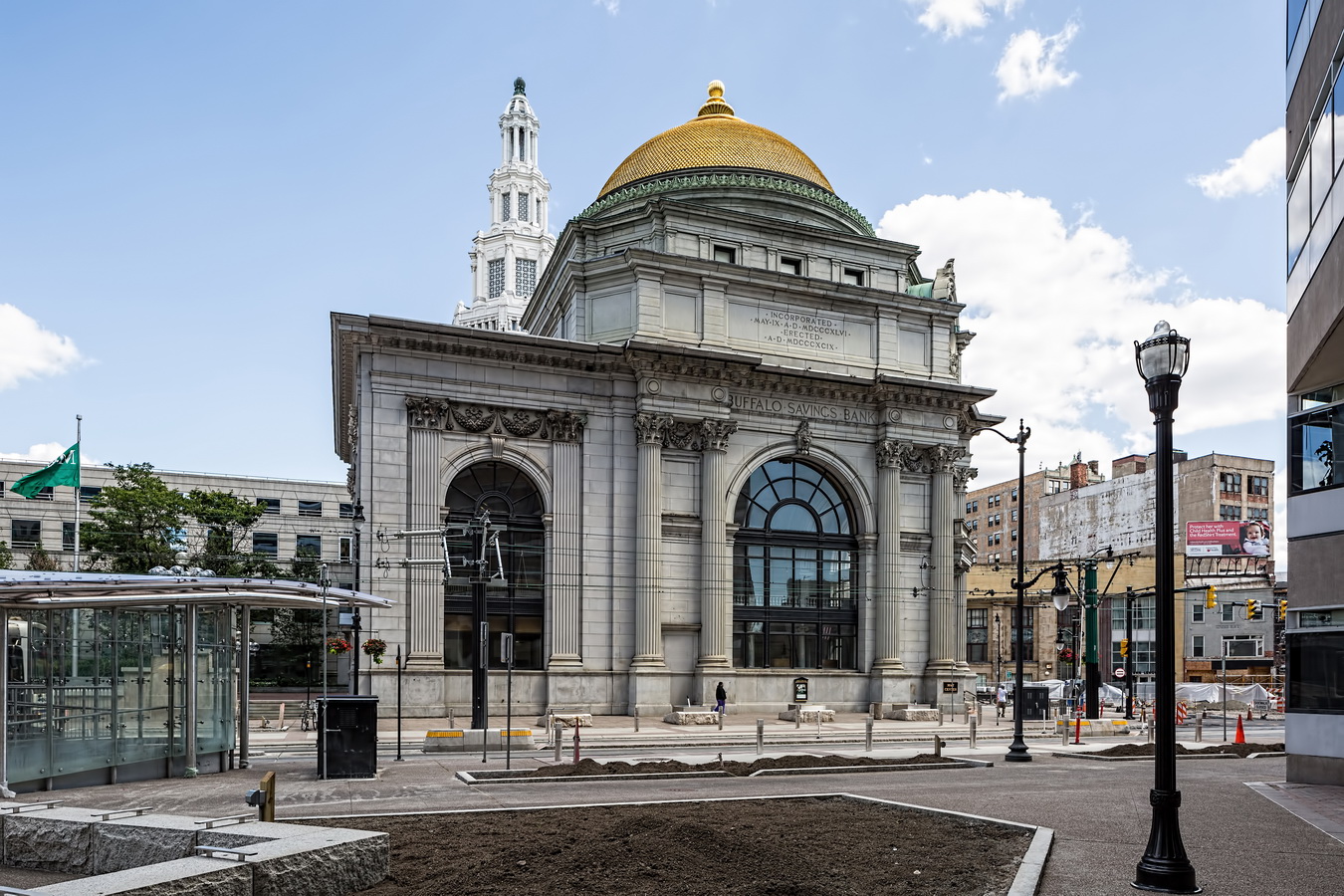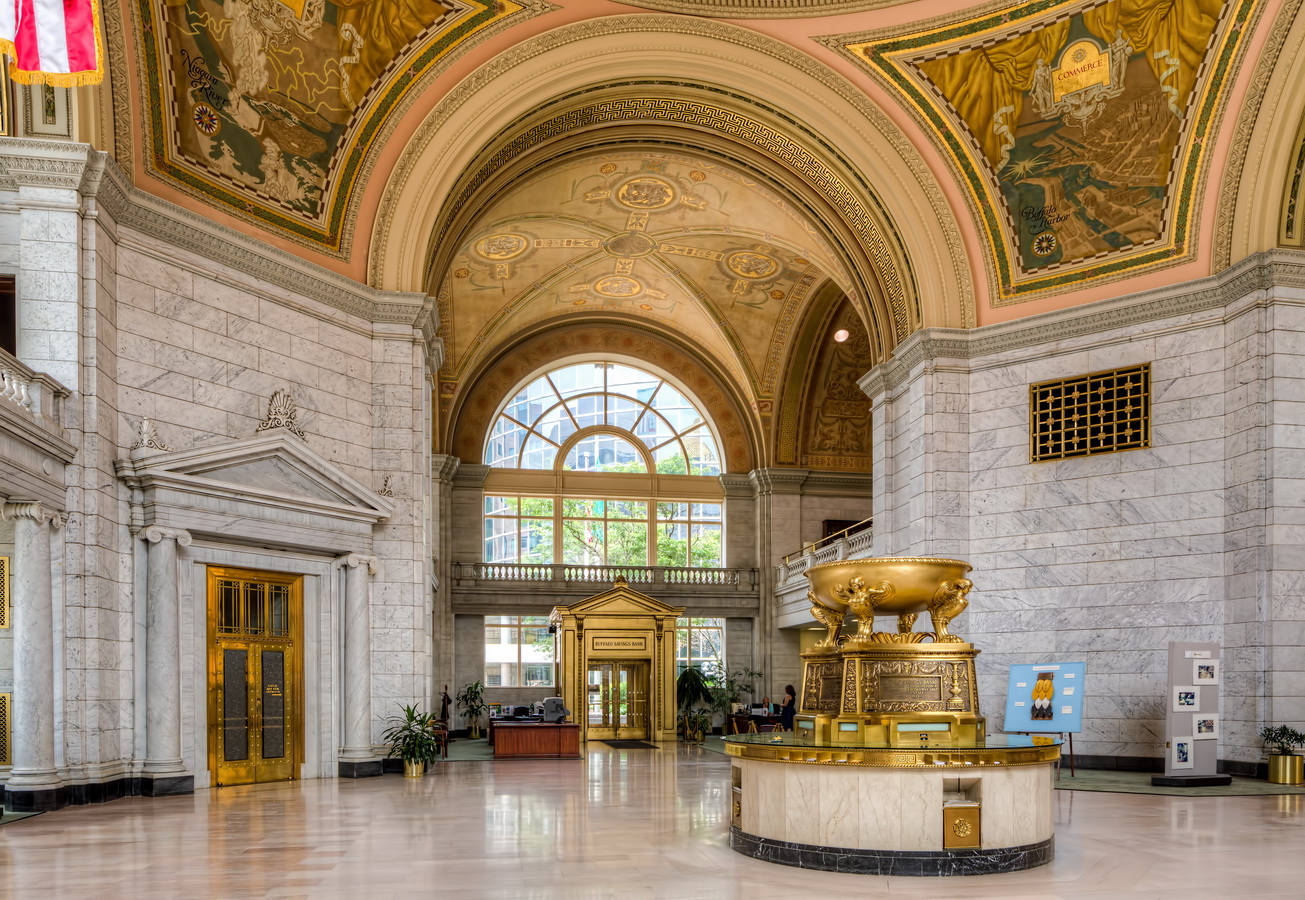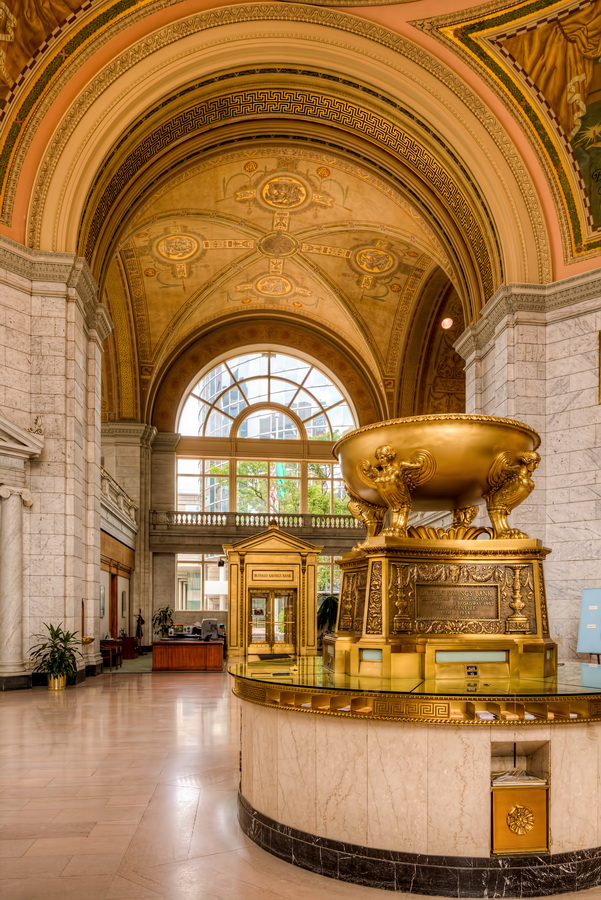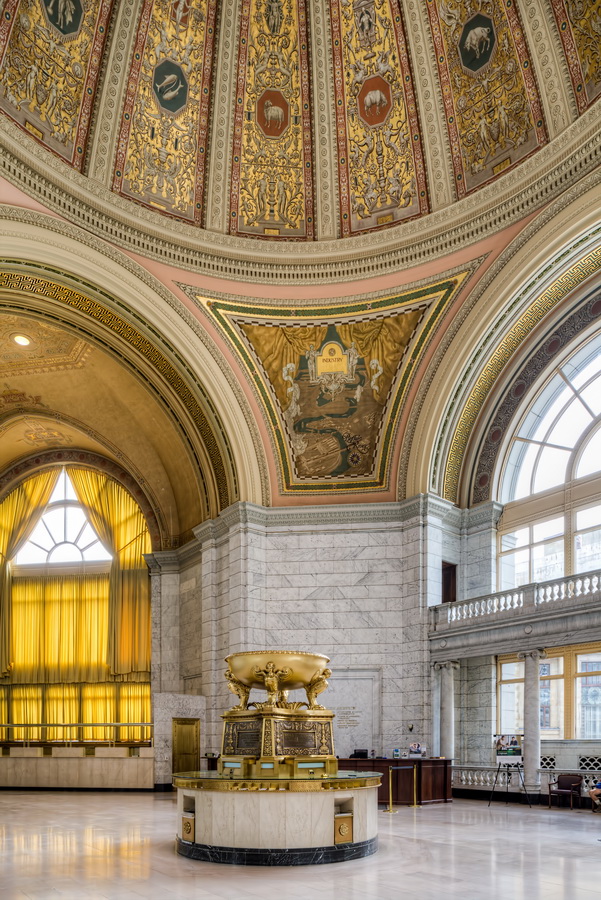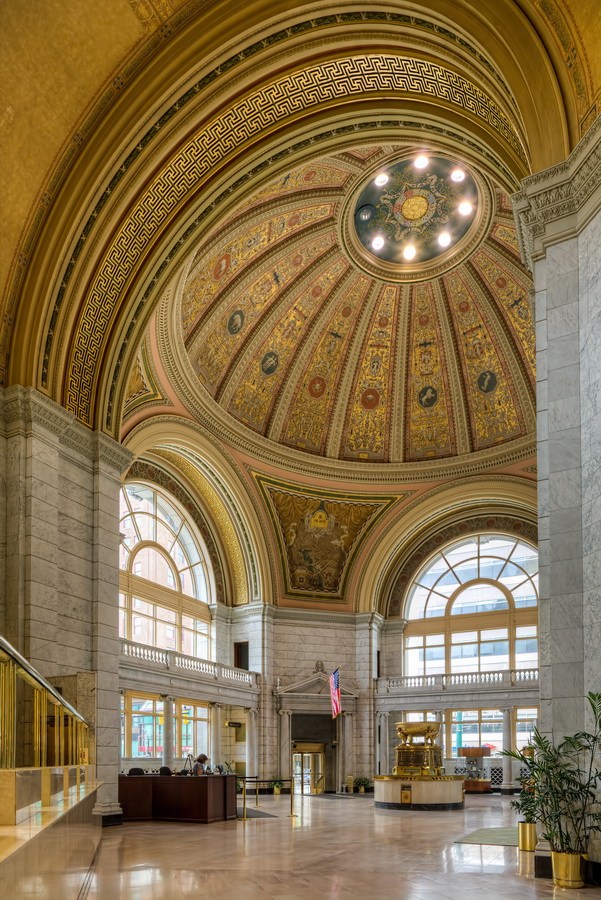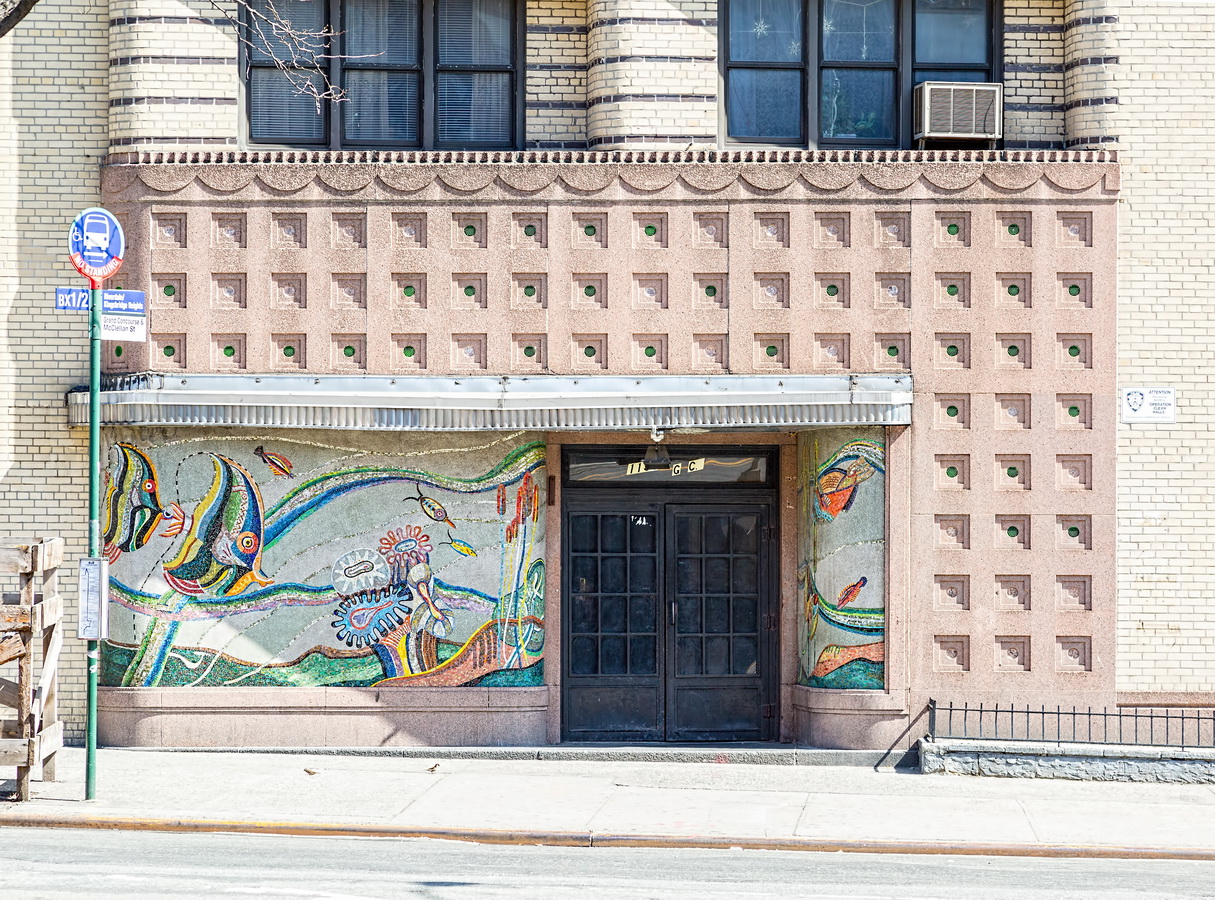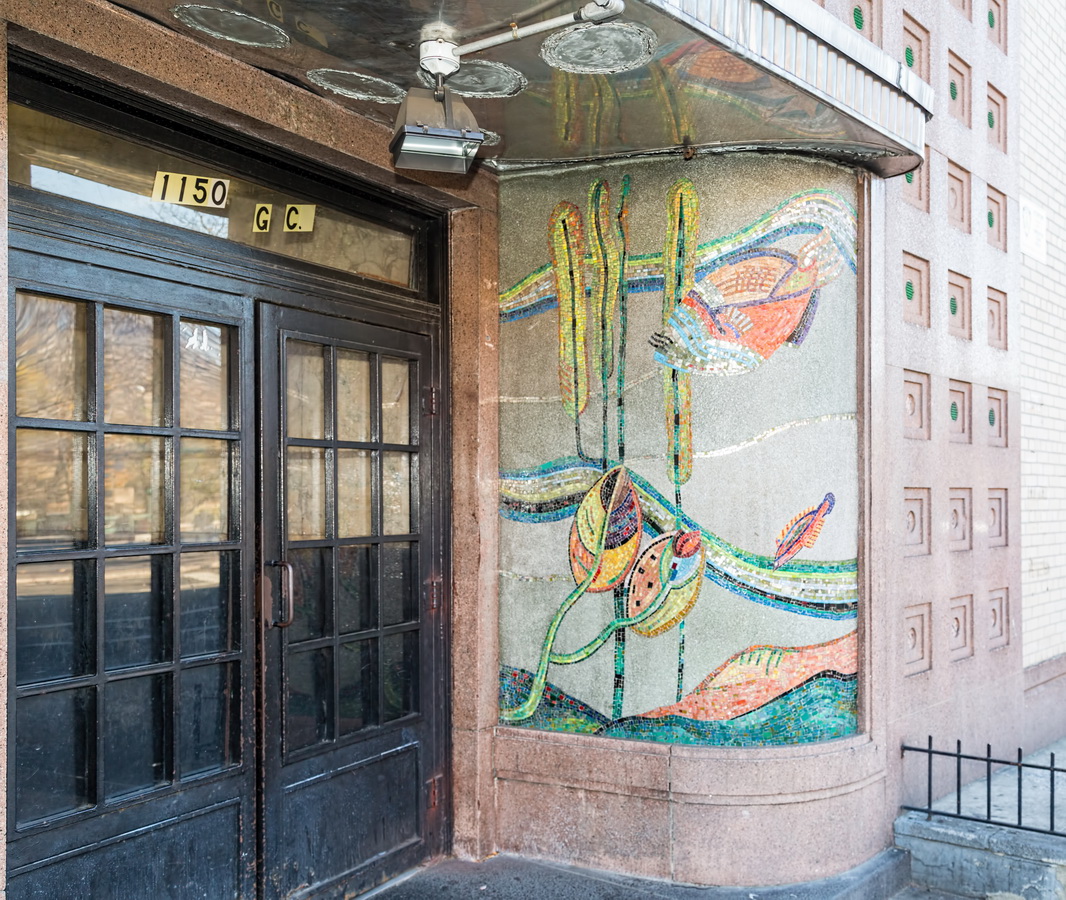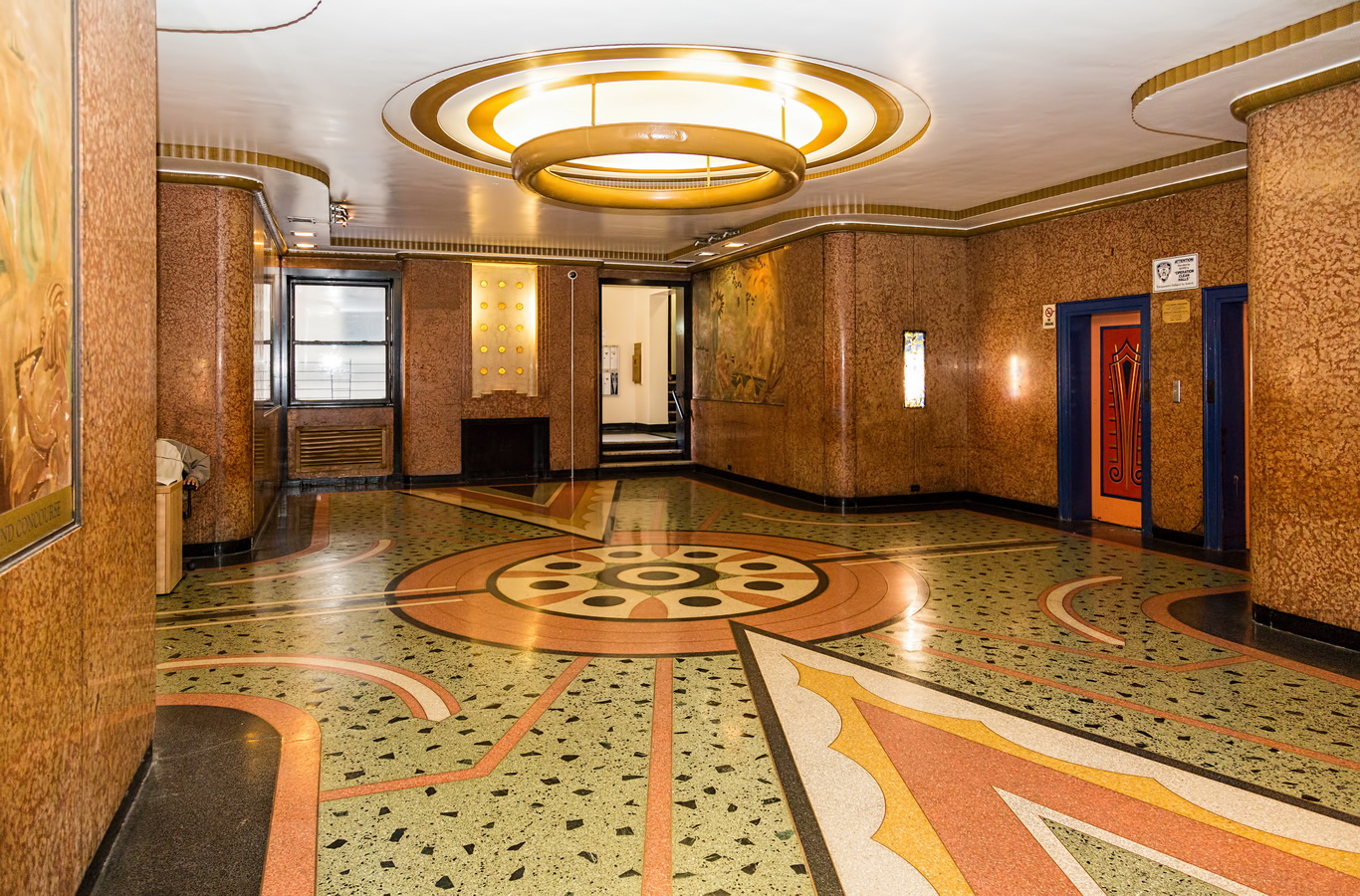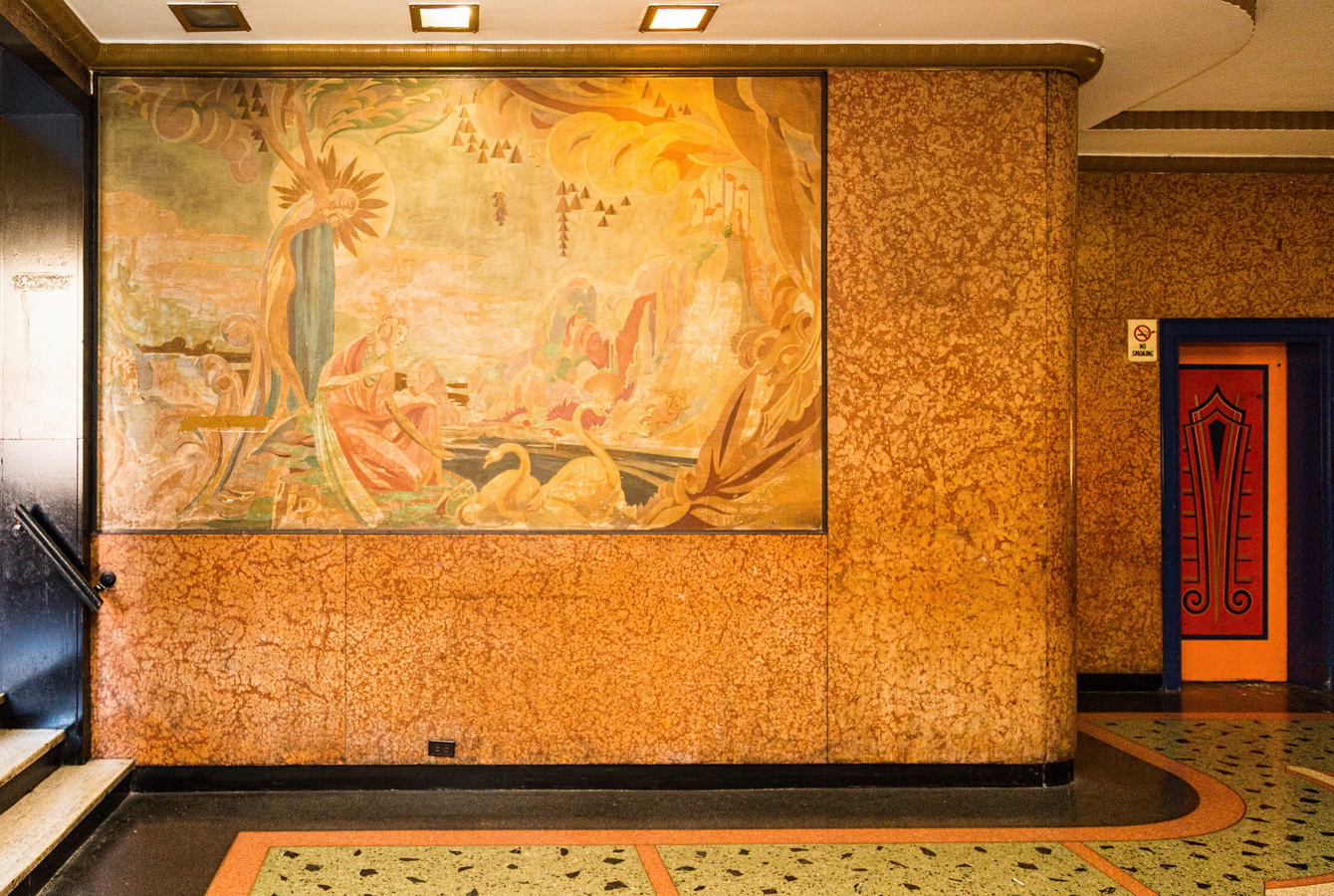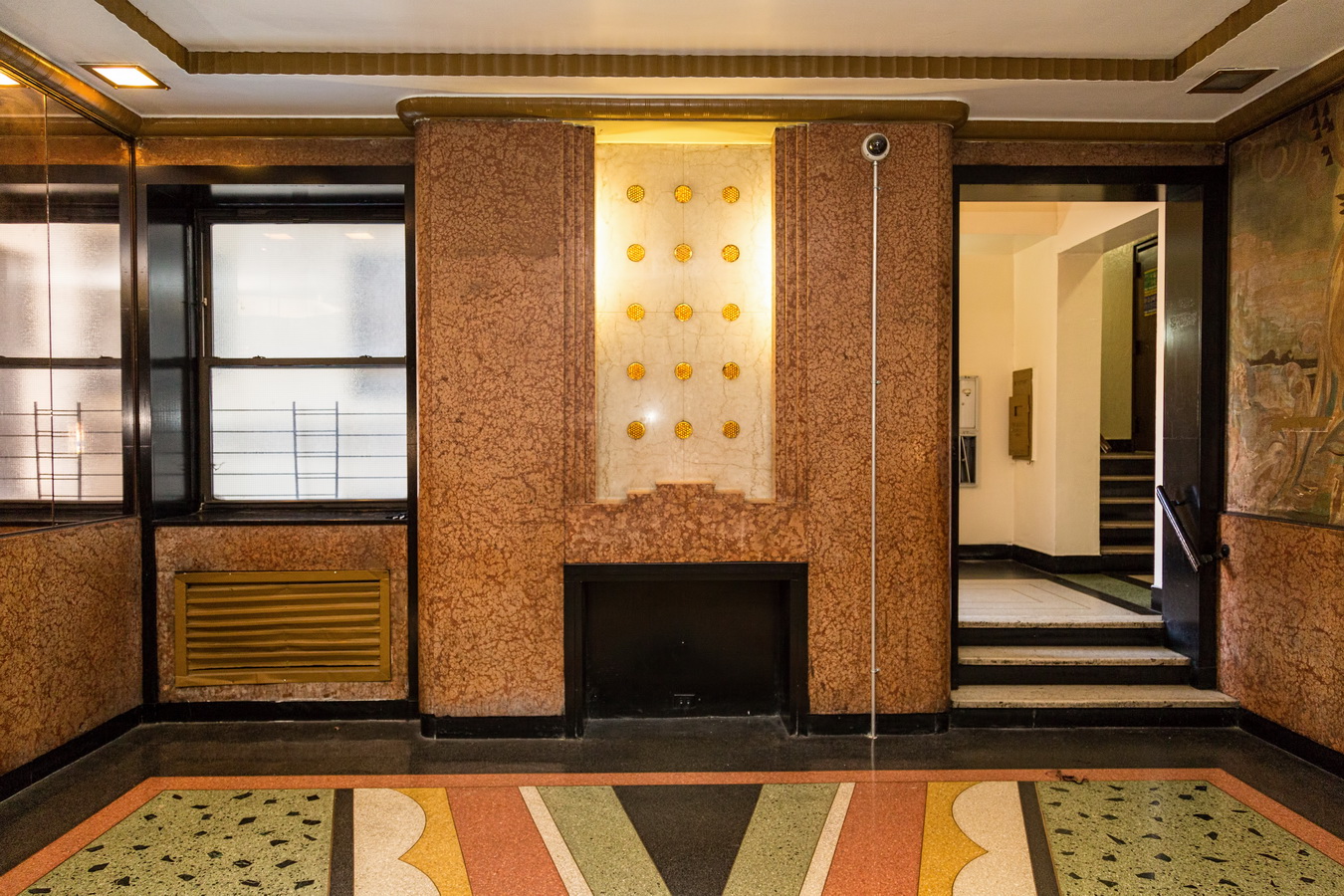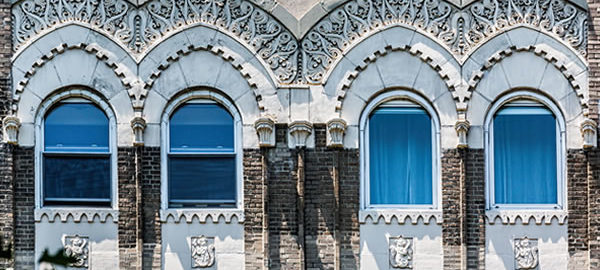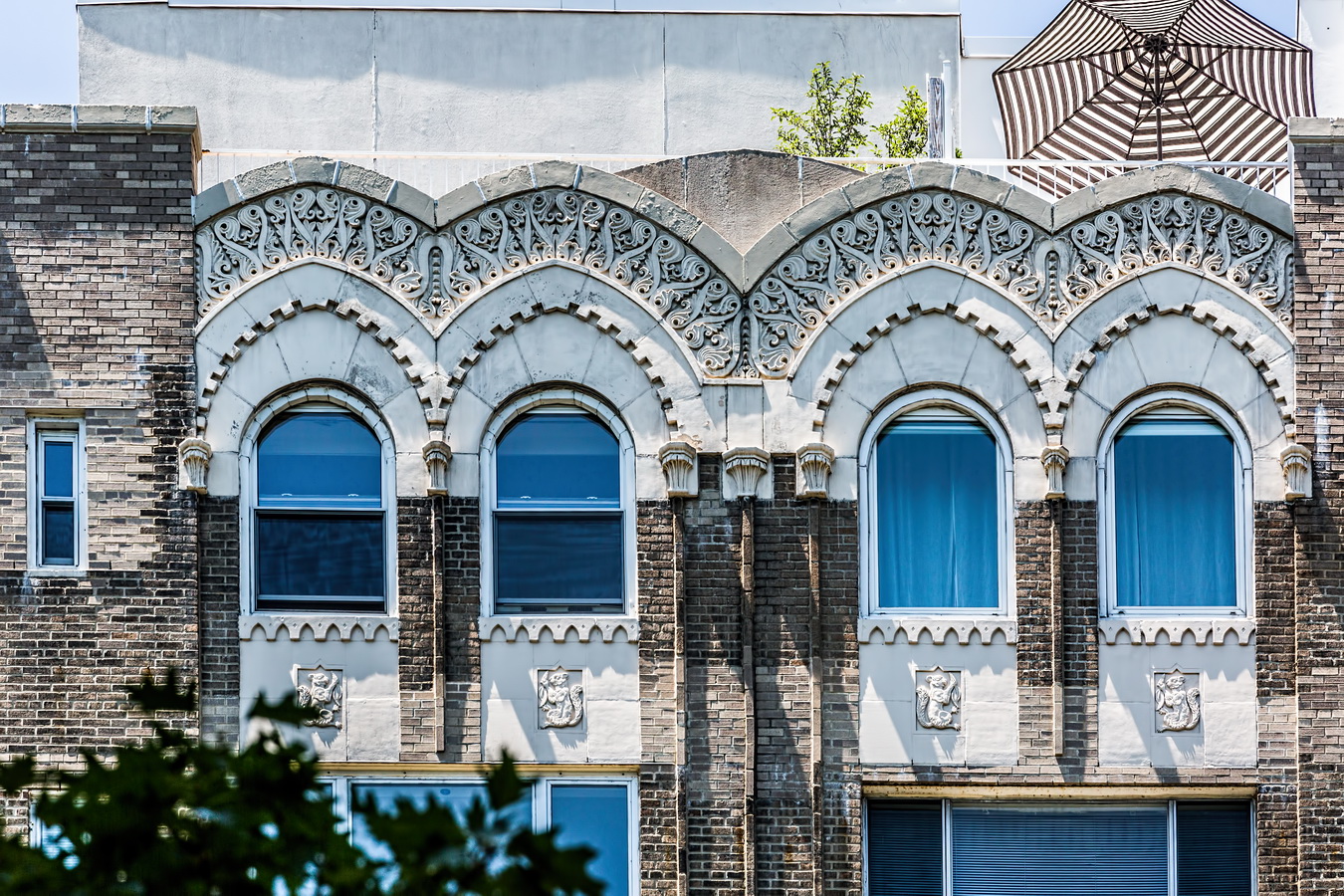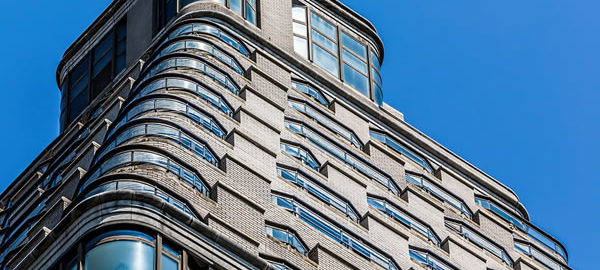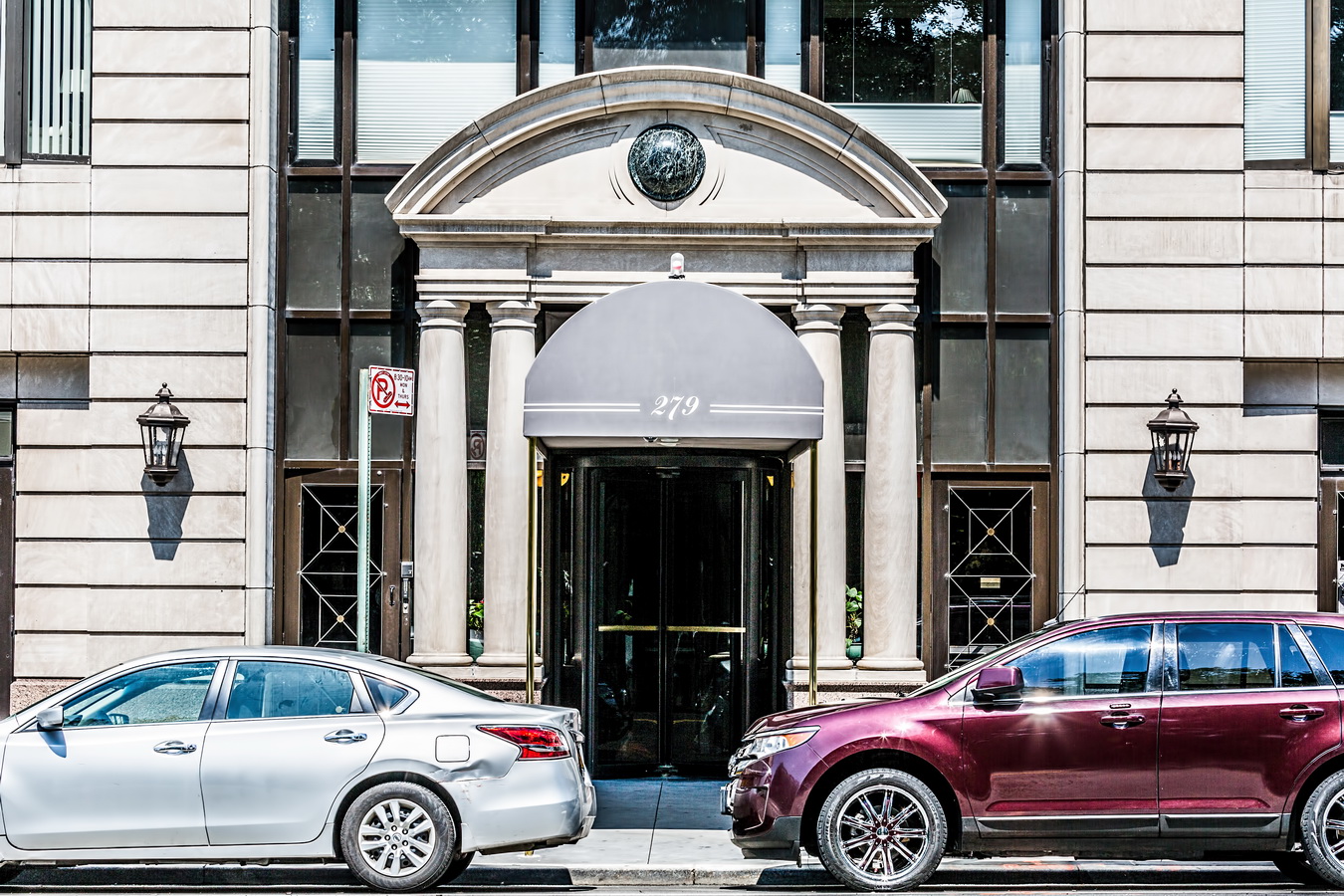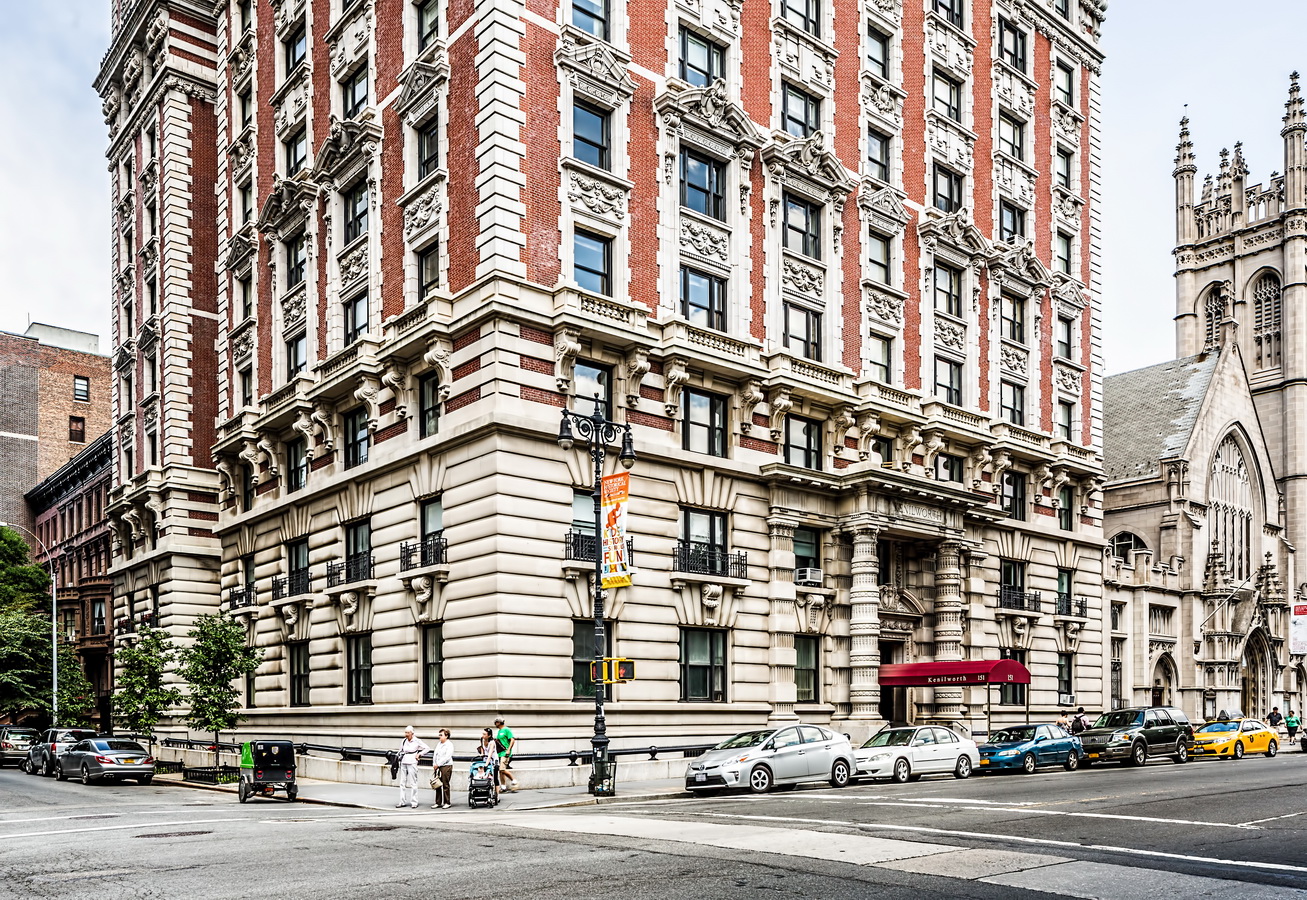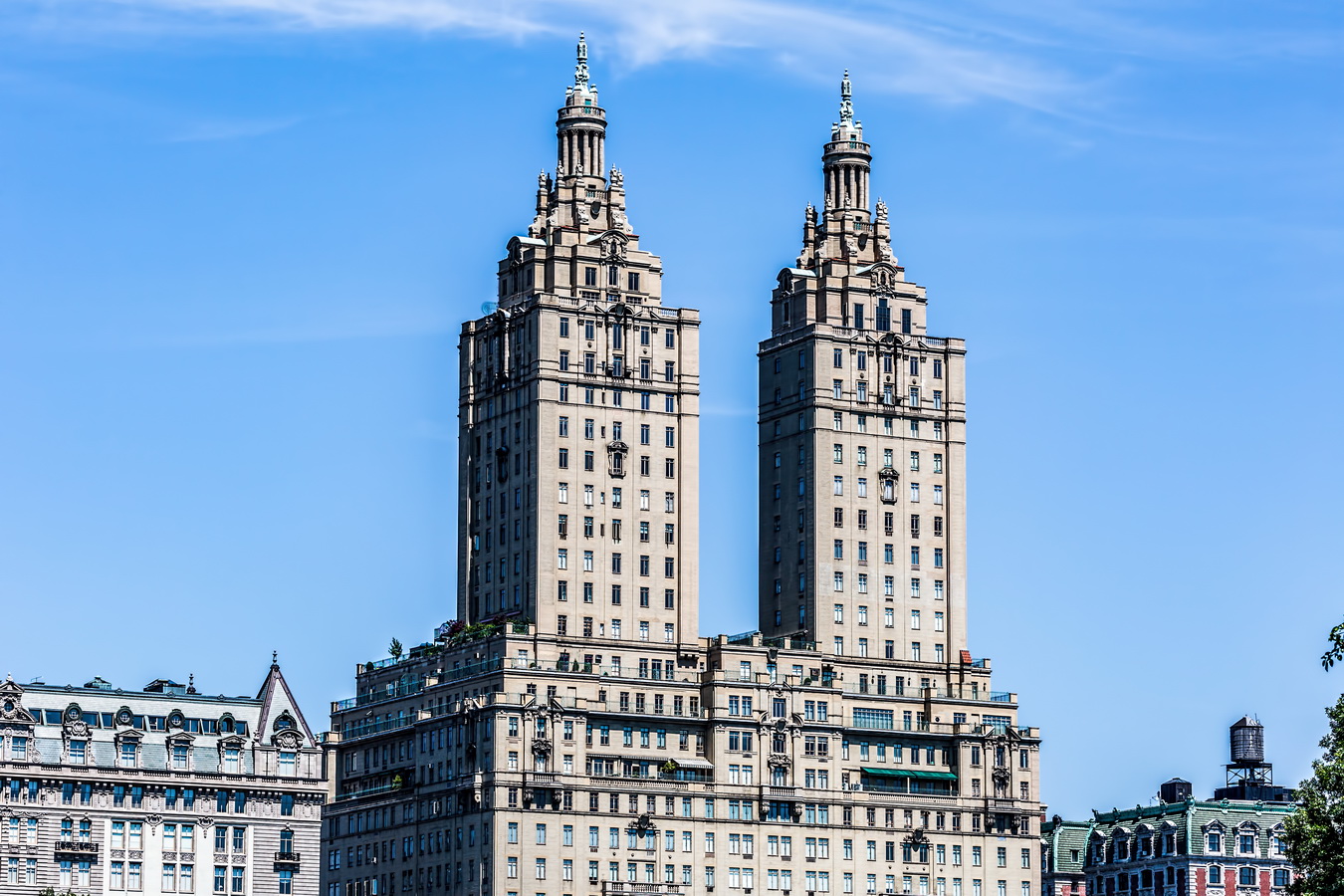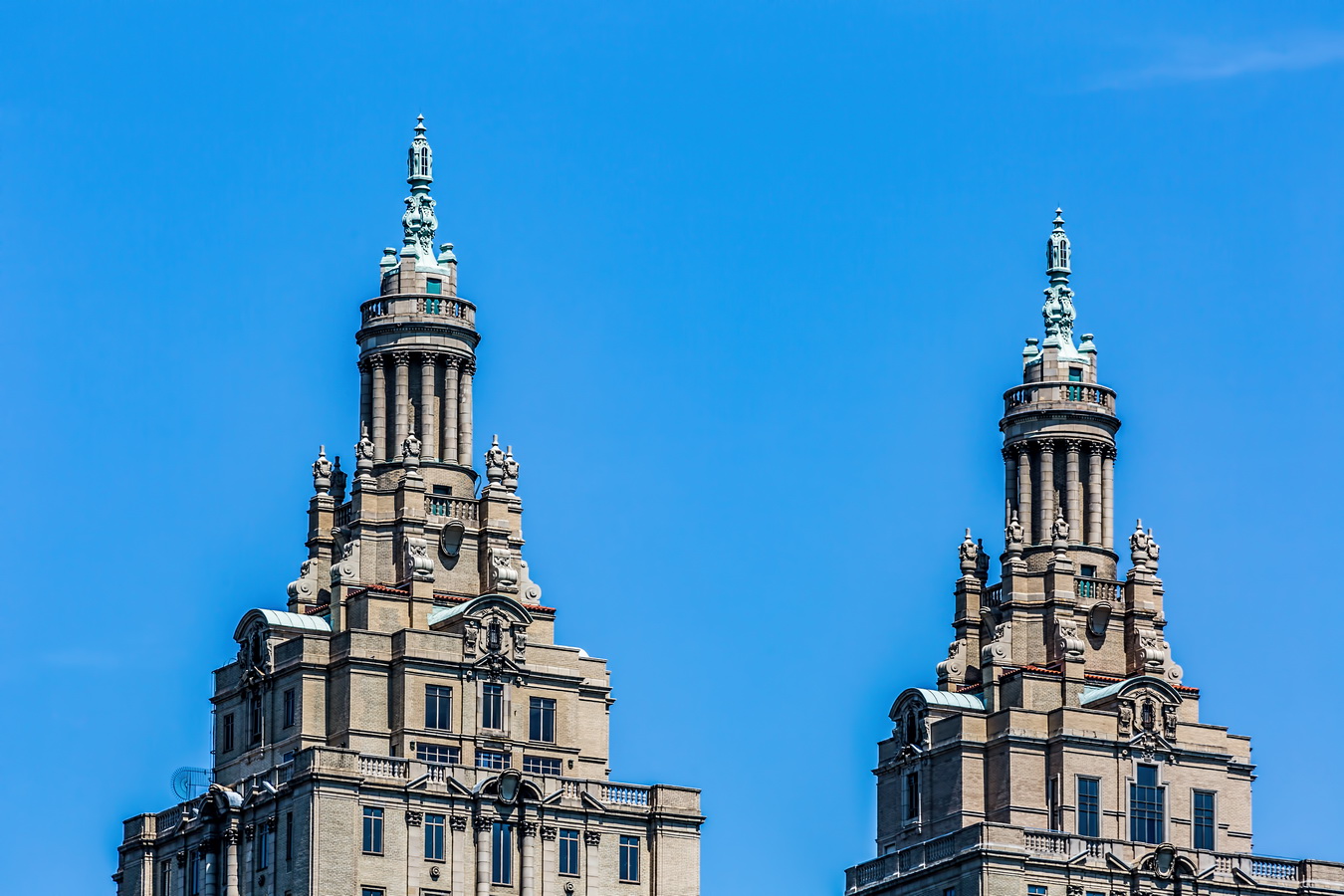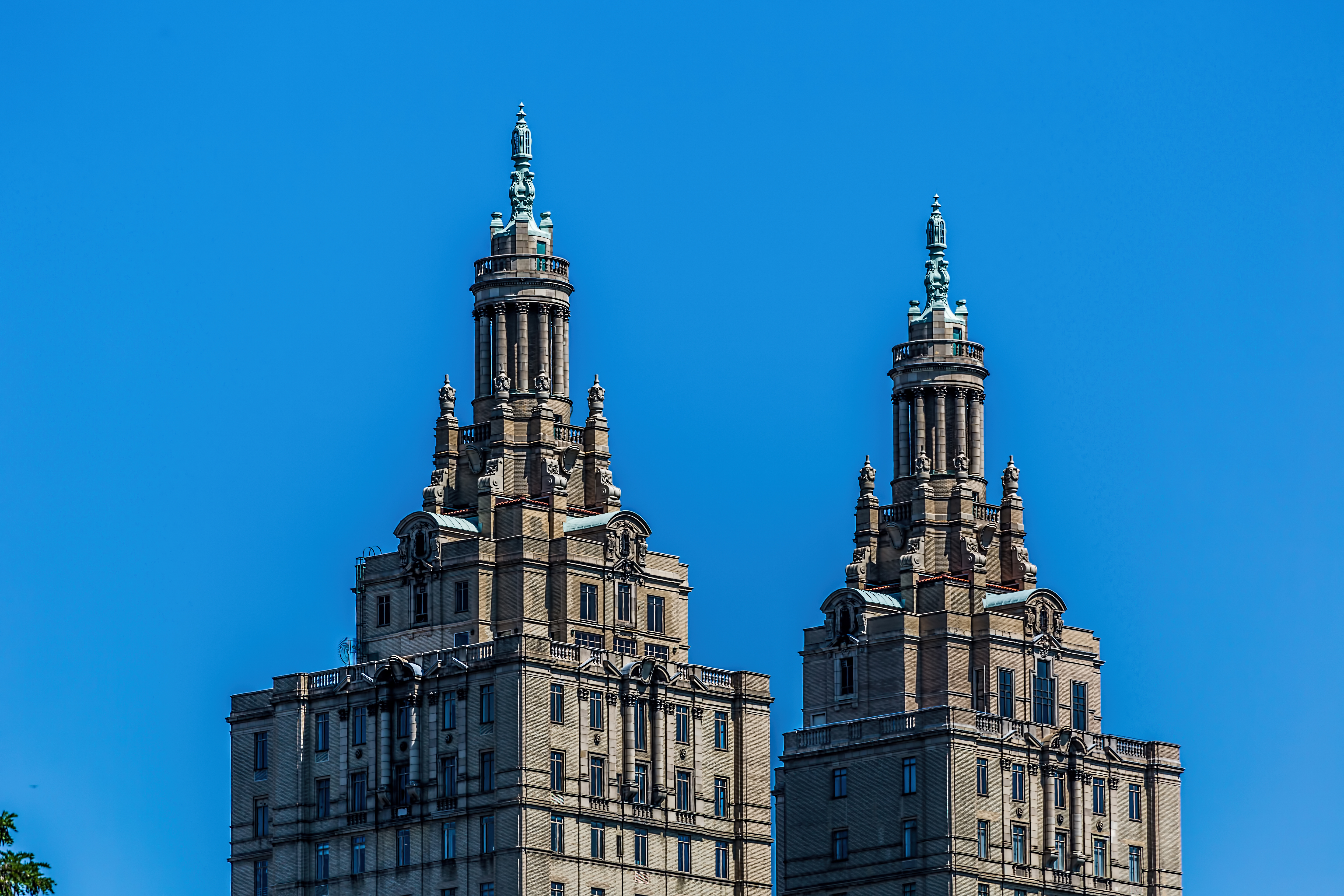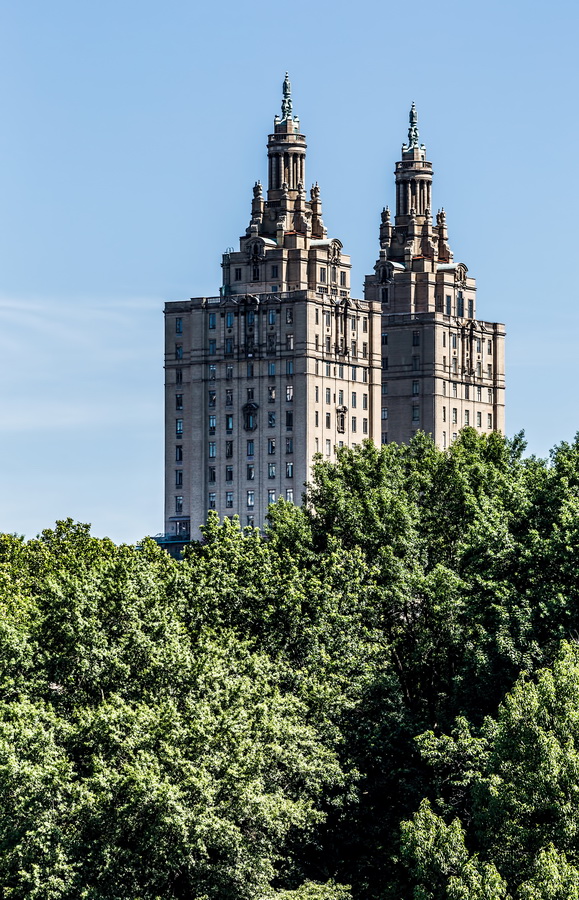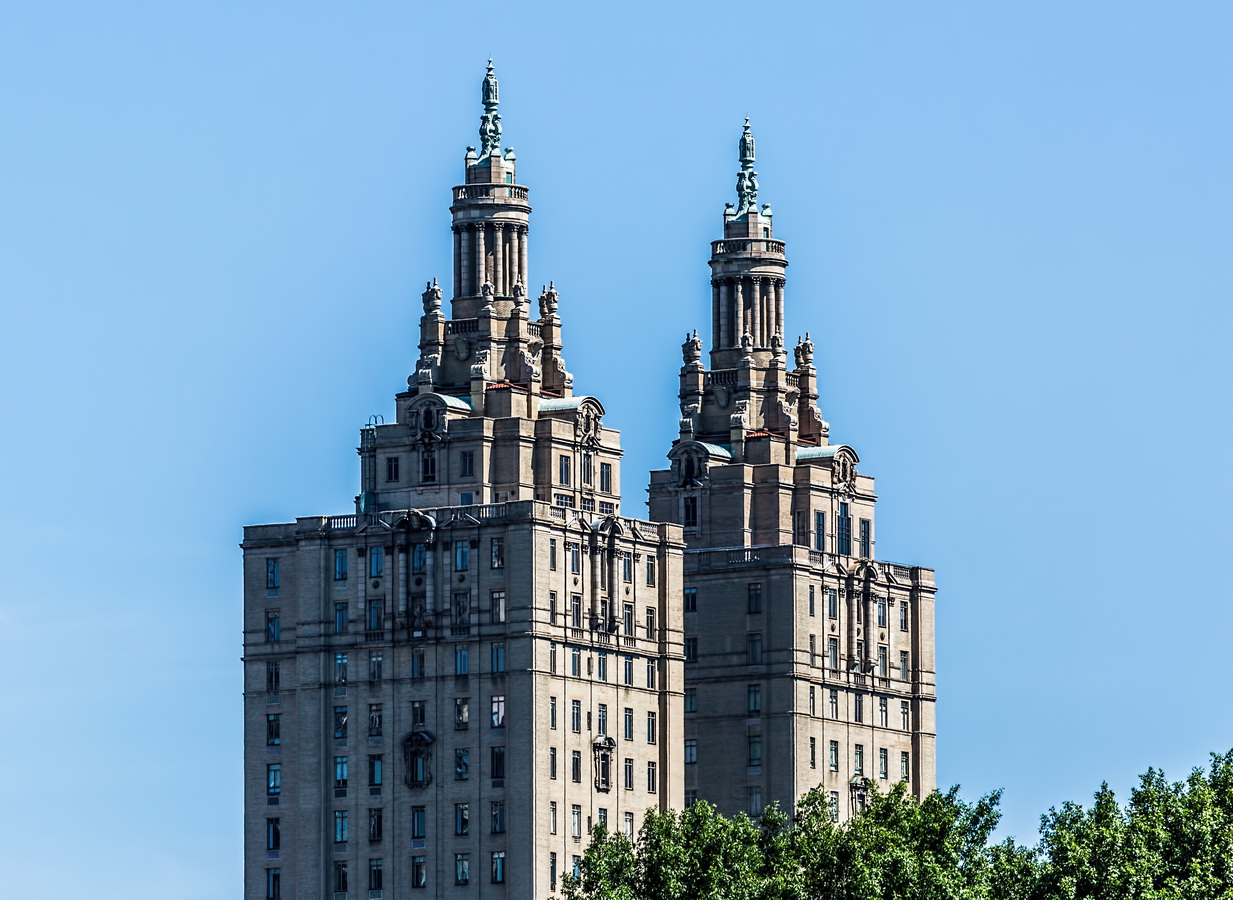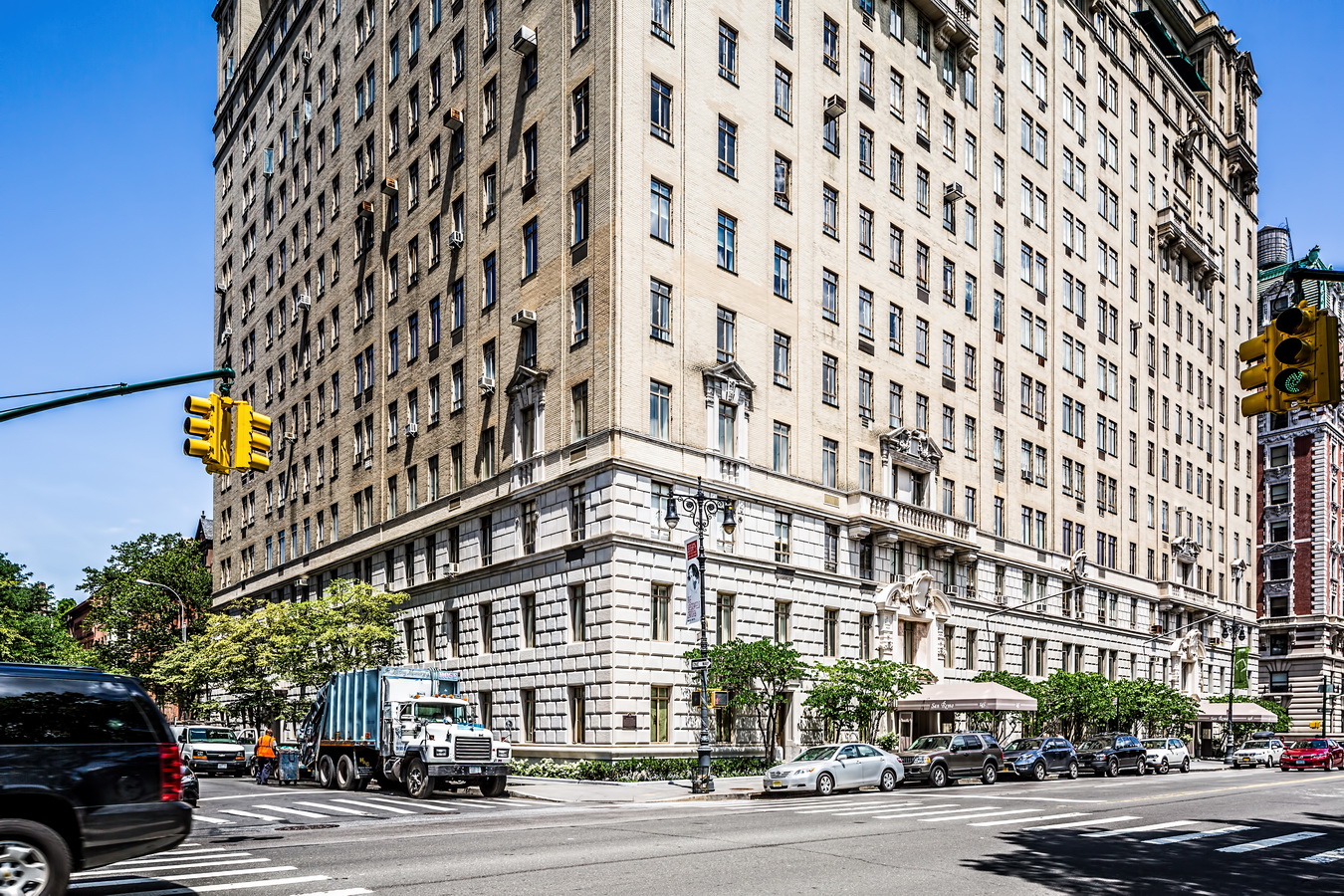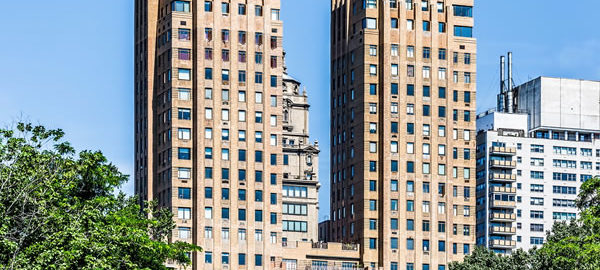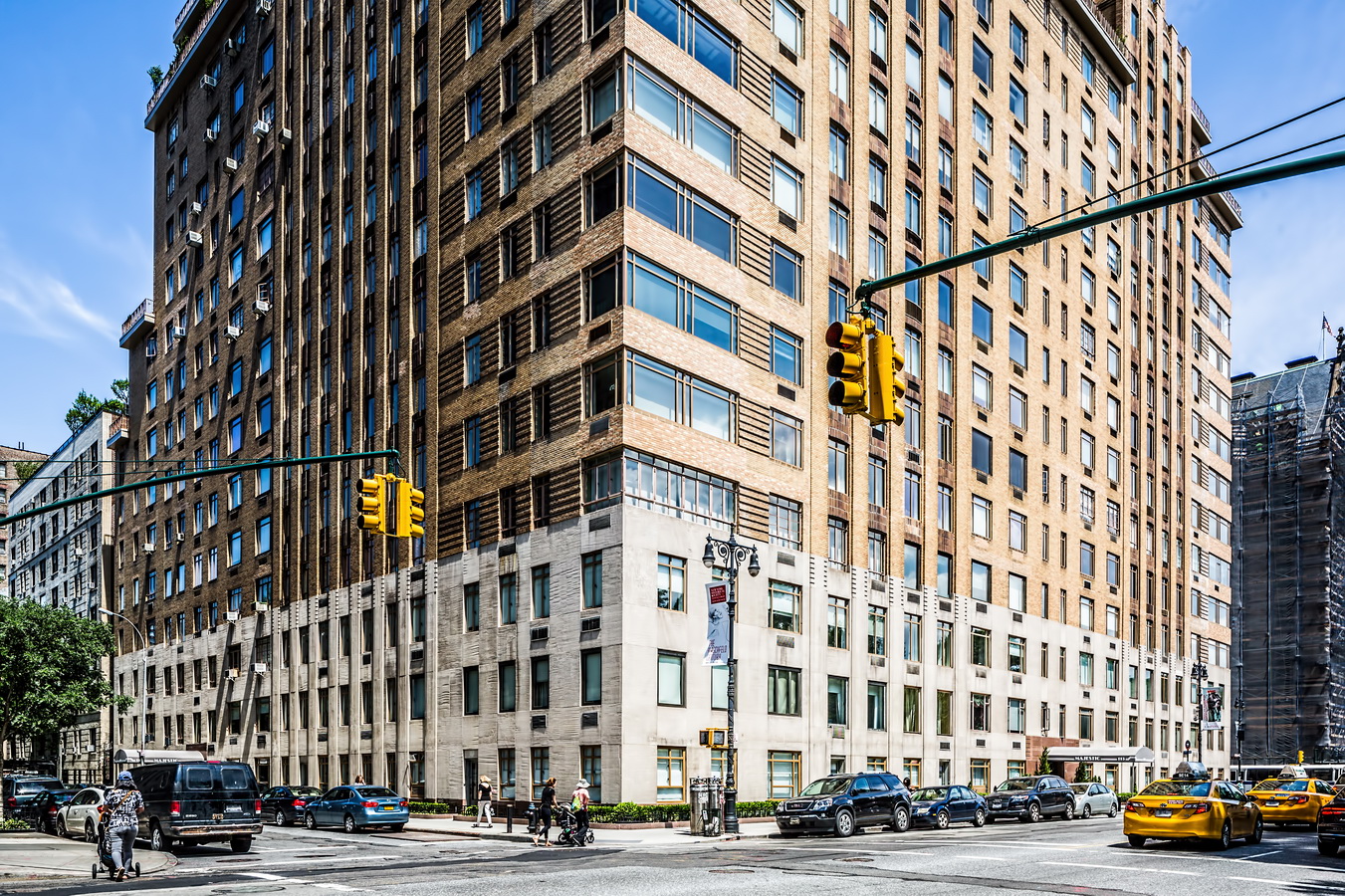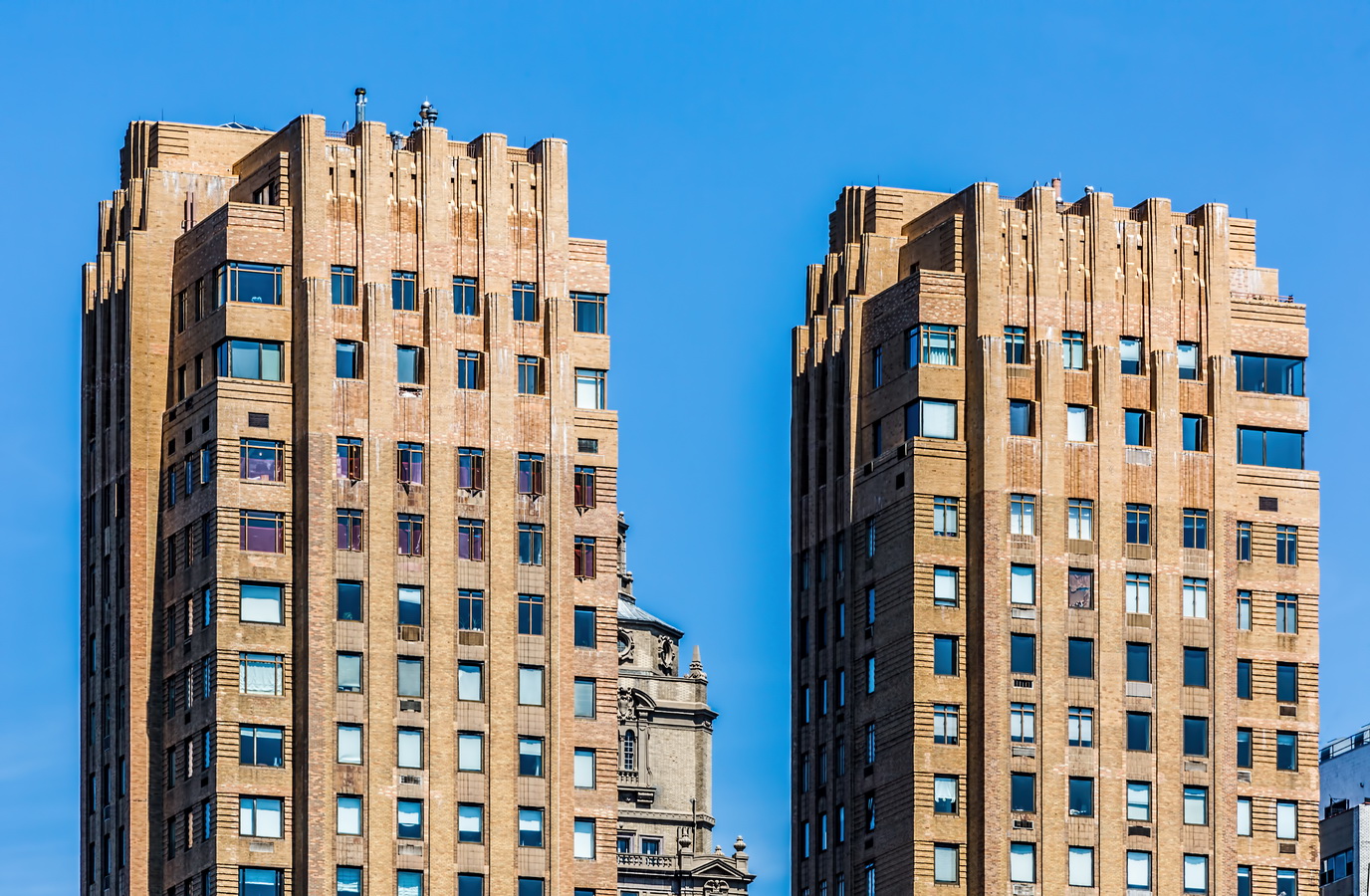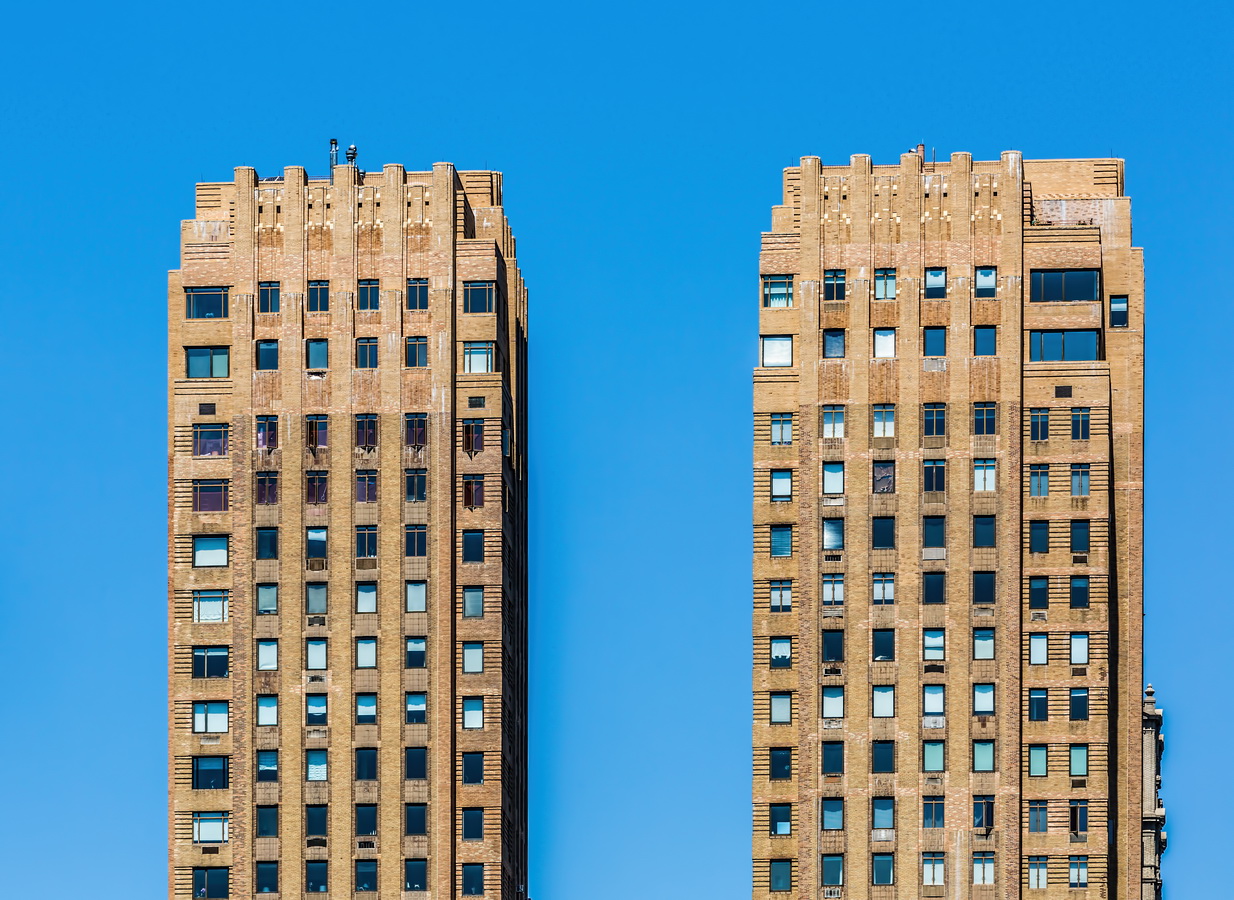Park Plaza Apartments is one of the first Art Deco apartment houses to be built in the Bronx. It was designed by the prolific team of Horace Ginsberg and Marvin Fine, who built dozens of buildings on and around the Grand Concourse, including the Fish Building and Noonan Plaza Apartments. Bold, colorful glazed terra cotta enlivens the 365-foot-wide facade.
Ginsberg (who later changed his name to Ginsbern) specialized in the design and layout of apartments, while Fine specialized in the elevations – the facades. Fine began his career working for Cass Gilbert, the architect of the Woolworth Building, among other landmarks. But while working for Ginsberg – in the midst of the Park Plaza project – Fine broke with his classical training and experience to embrace “modernistic” design. Fine credited the work of William Van Alen (Chrysler Building) and Raymond Hood (American Radiator Building) as his inspiration.
The Park Plaza Apartments is on an L-shaped site with its long side on Jerome Avenue; the base pokes through the block to Anderson Avenue. The eight-story building, viewed from the front, has five blocks or wings separated by courtyards. Initially, the building was to have 10 floors. During construction, fire destroyed the building, and the Department of Buildings imposed a lower height for the rebuilt apartments.
When built, Park Plaza Apartments promoted its quiet views of Jerome Park. Part of the park remains (Mullaly Park), but the New Yankee Stadium occupies what was Macombs Dam Park, across the street. So much for quiet.
(At this writing, facade repairs spoil the picture; I hope to re-photograph the building when the scaffolding is removed.)
Park Plaza Apartments Vital Statistics
- Location: 1005 Jerome Avenue at E 164th Street and 1000 Anderson Avenue (Bronx)
- Year completed: 1931
- Architect: Horace Ginsbern and Marvin Fine
- Floors: 8
- Style: Art Deco
- New York City Landmark: 1981
- National Register of Historic Places: 1982
Park Plaza Apartments Recommended Reading
- Wikipedia entry
- NYC Landmarks Preservation Commission designation report
- Columbia University | New York Real Estate Brochure Collection
- Scouting New York blog
- Boulevard of Dreams: Heady Times, Heartbreak, and Hope Along the Grand Concourse
- Finkelstein, Timberger, East Real Estate (owner) rental site listing
- Emporis database
